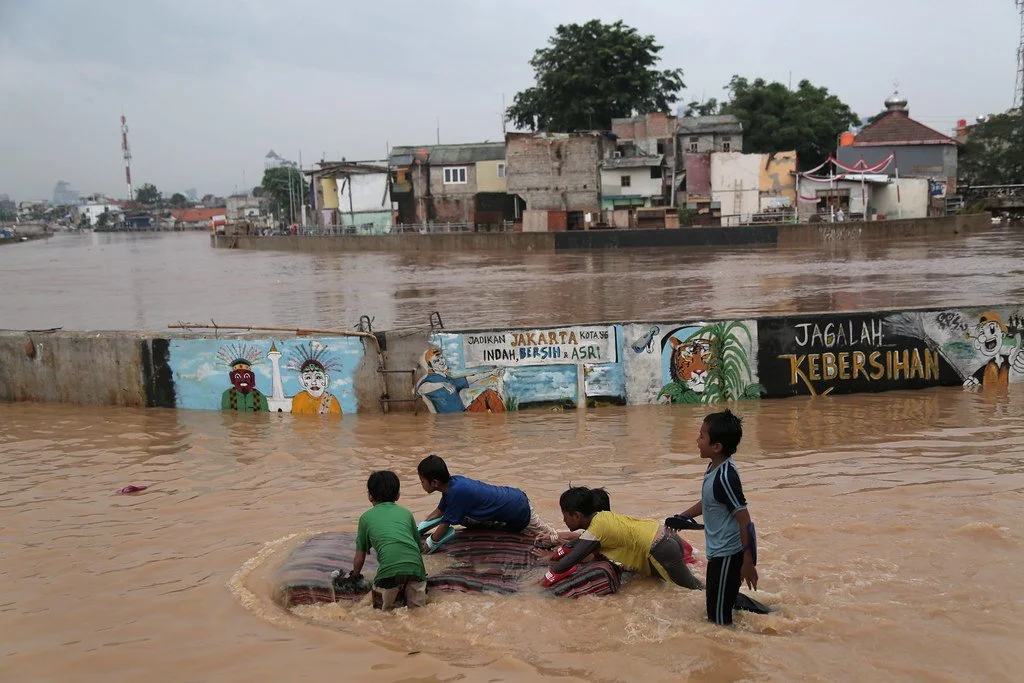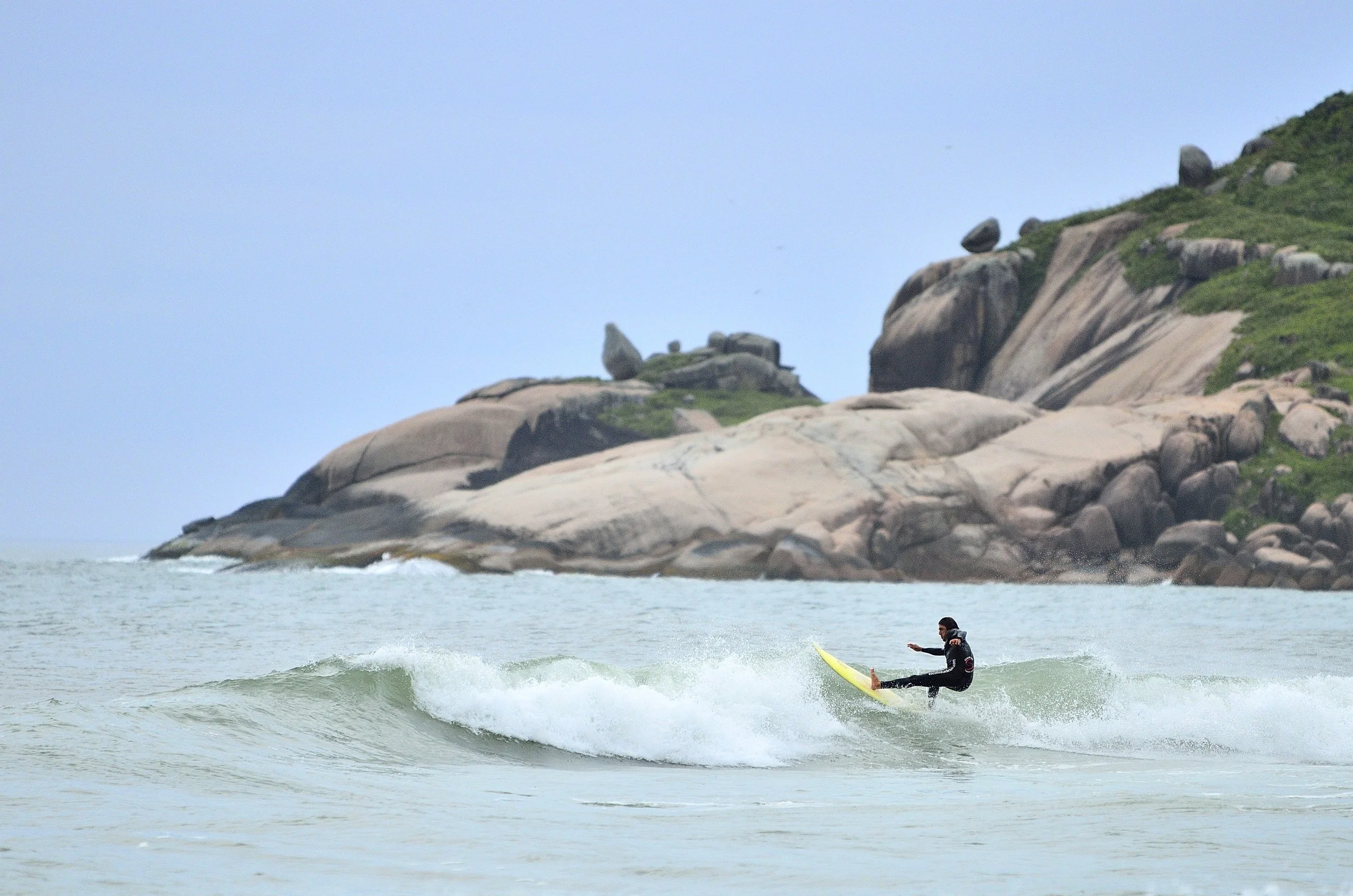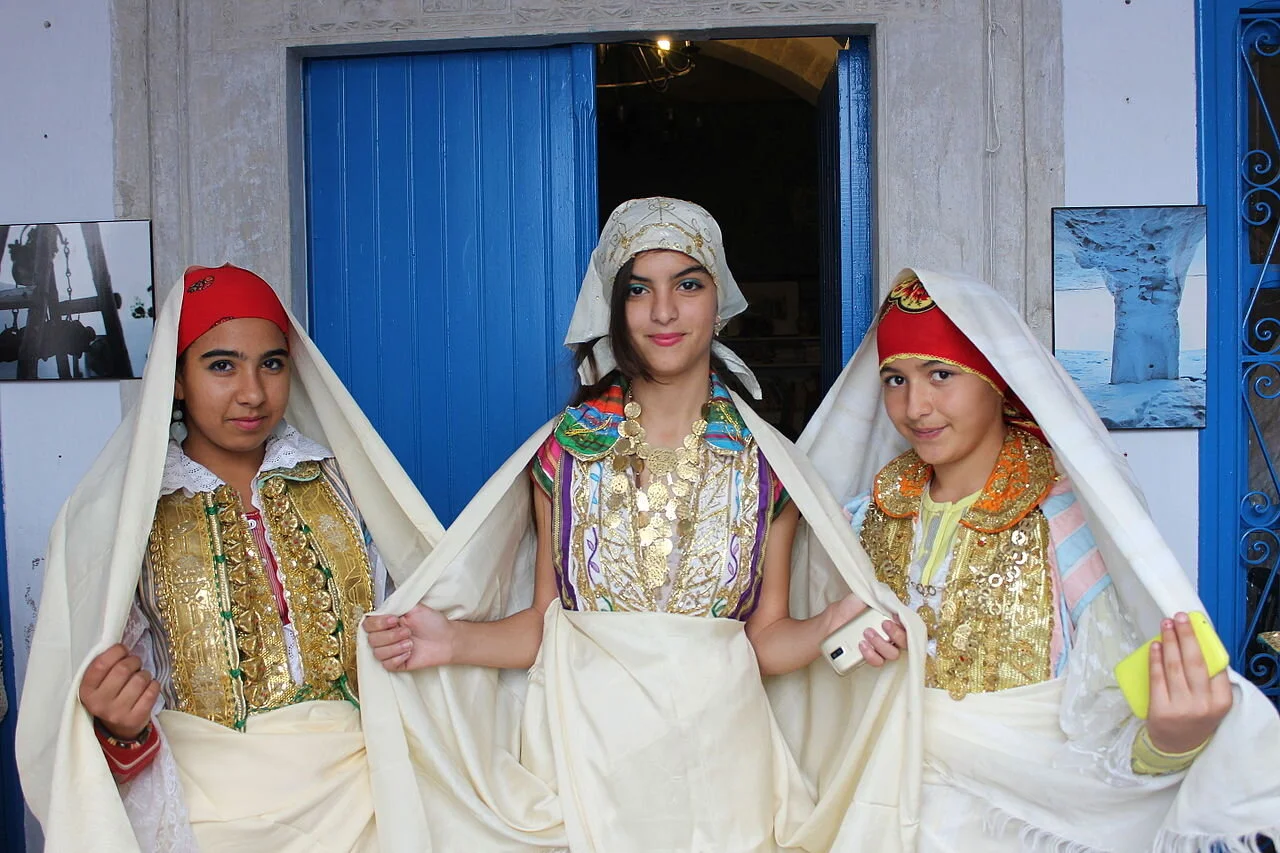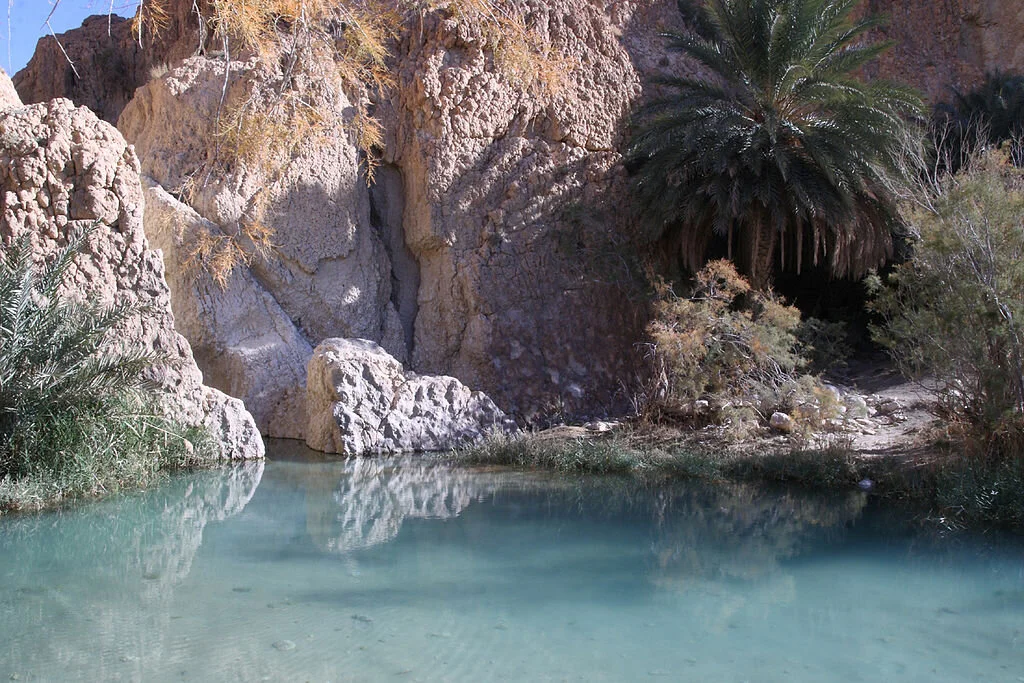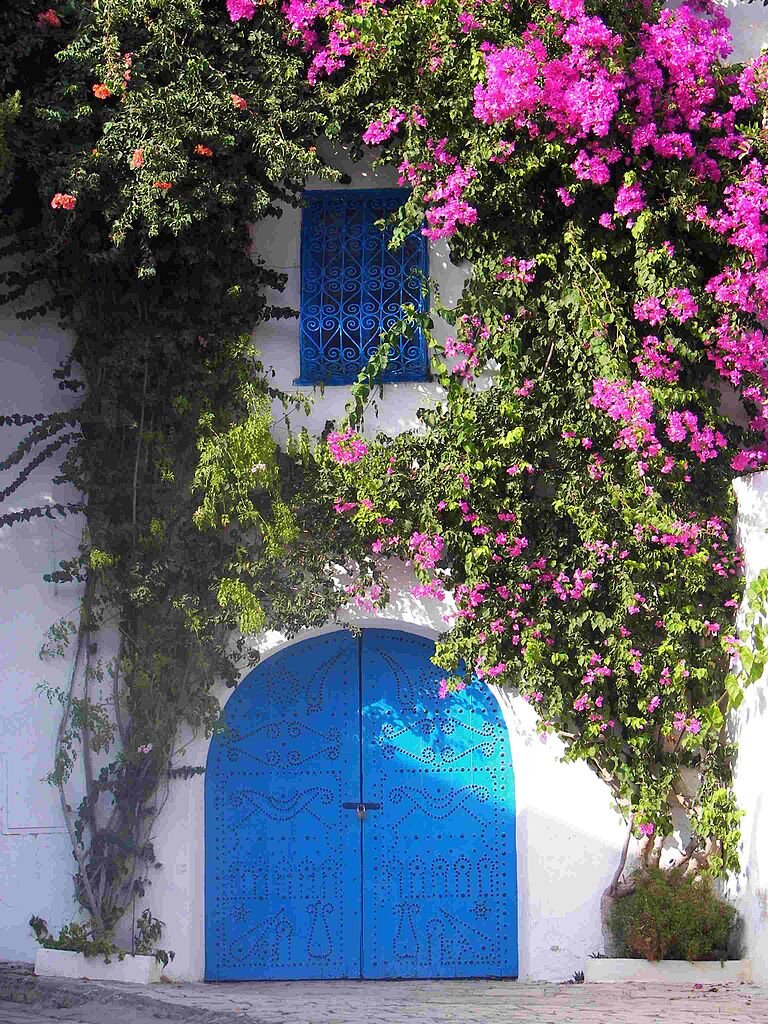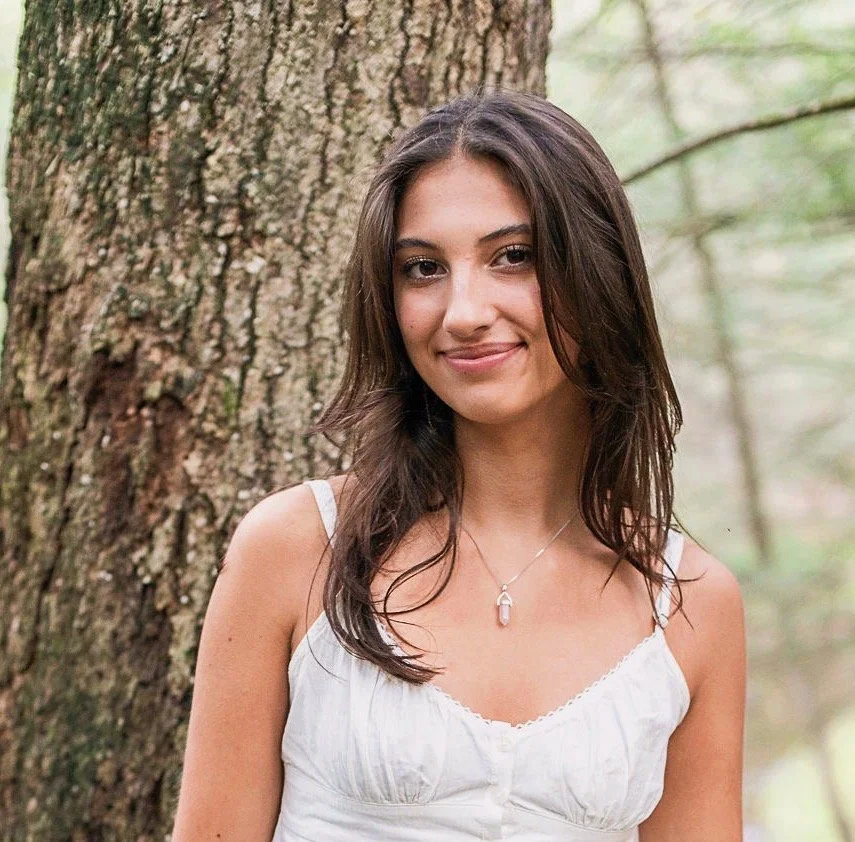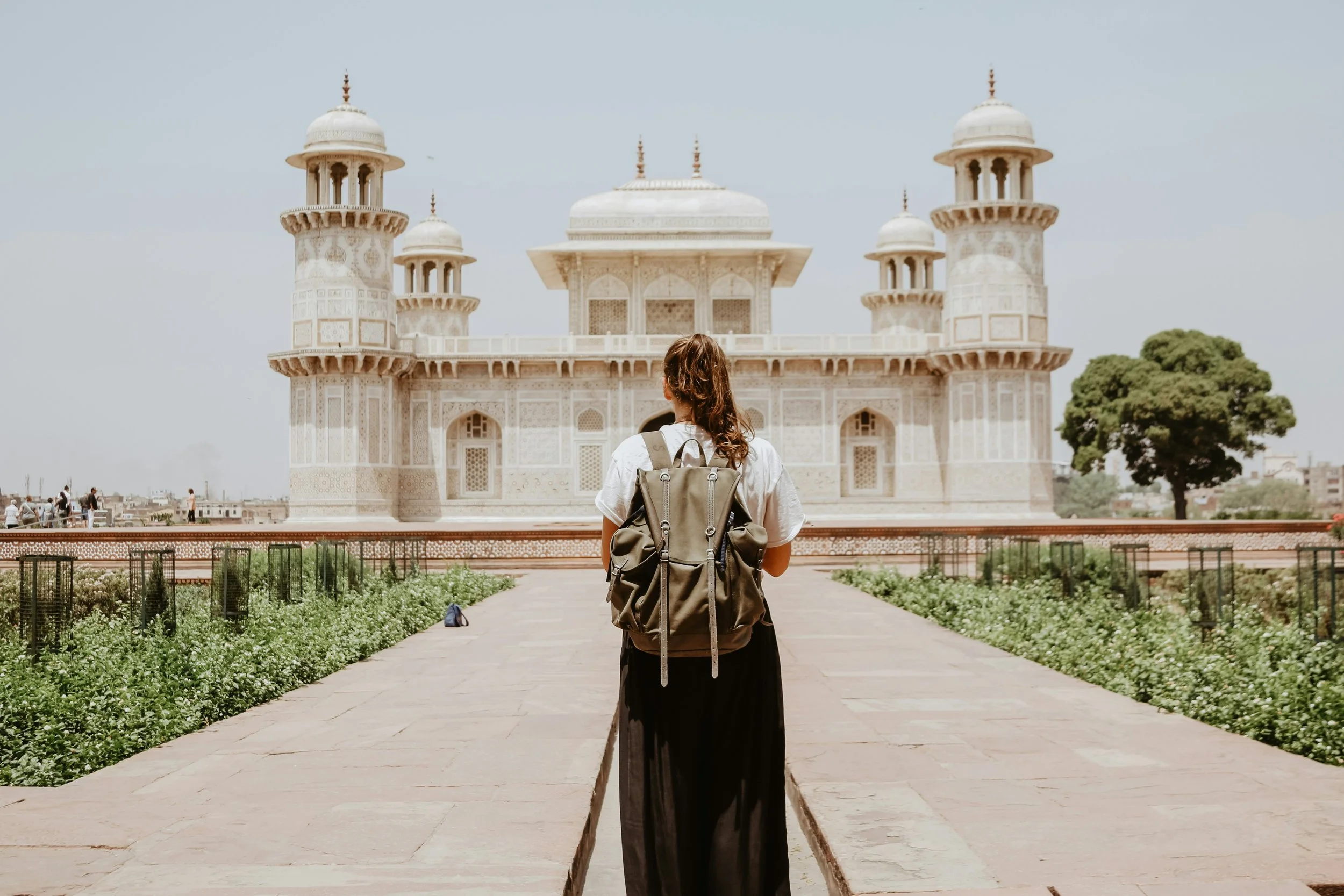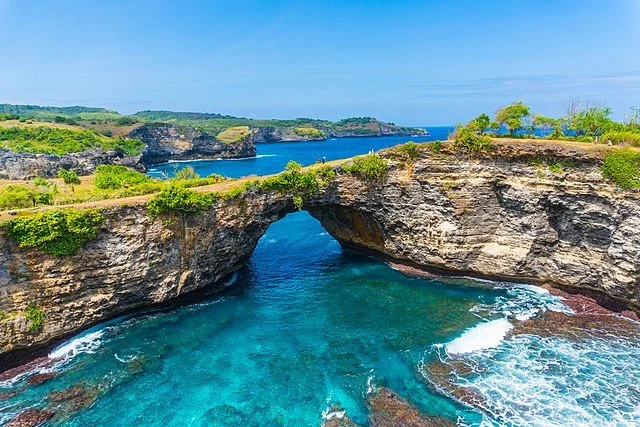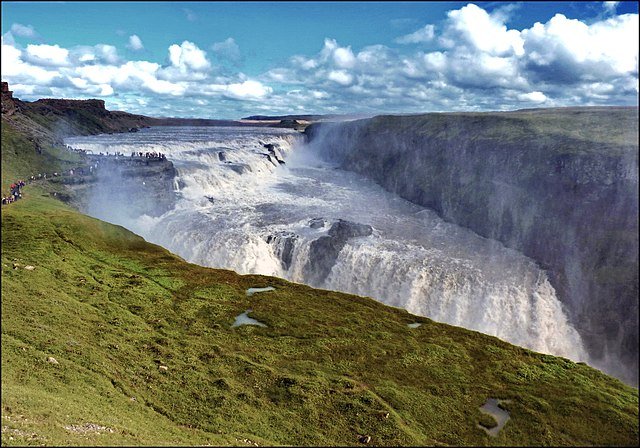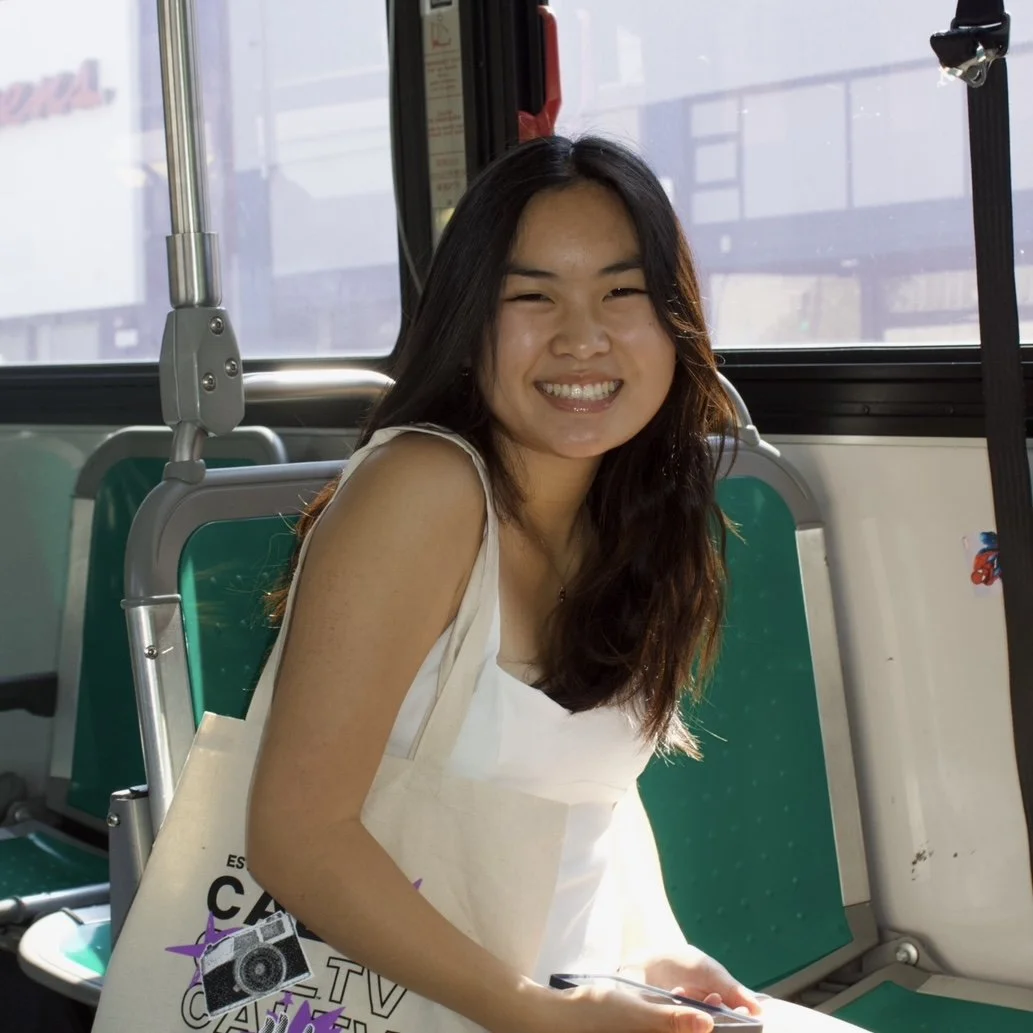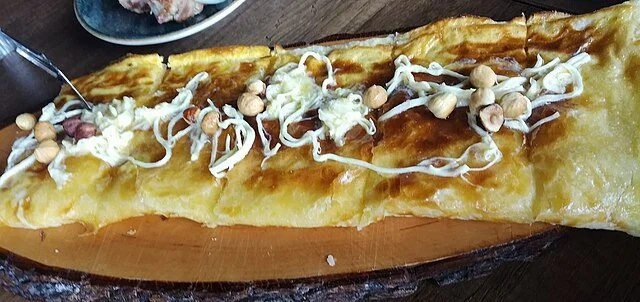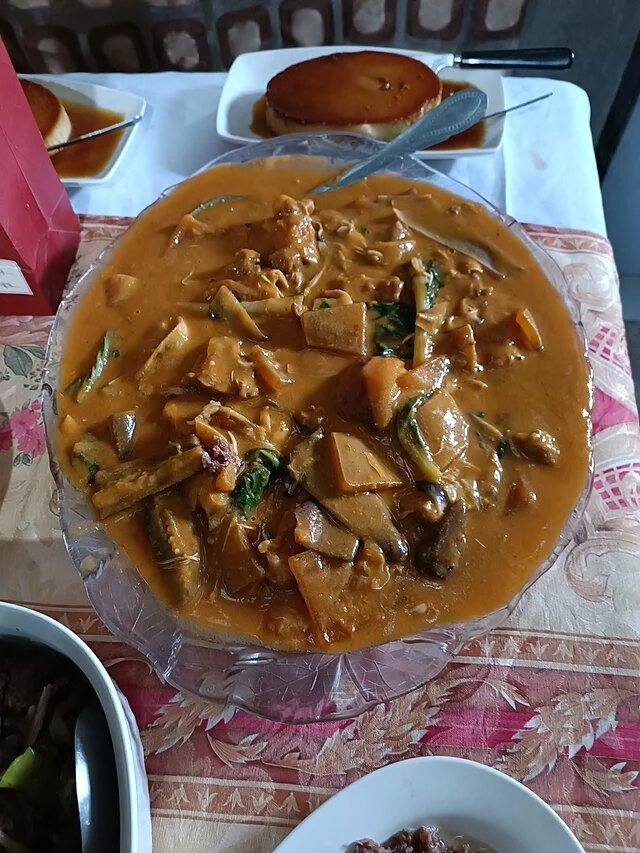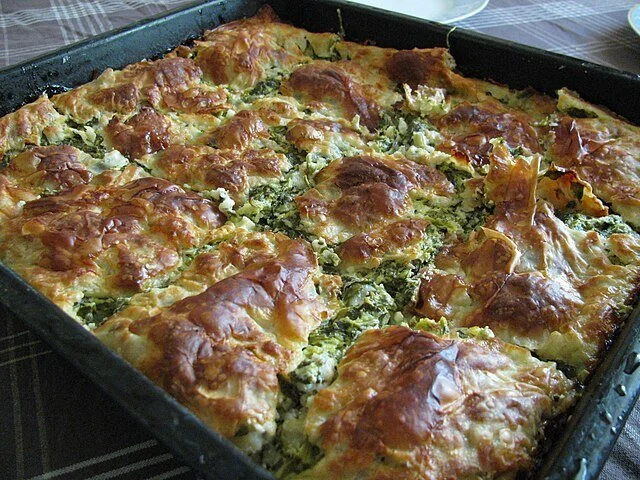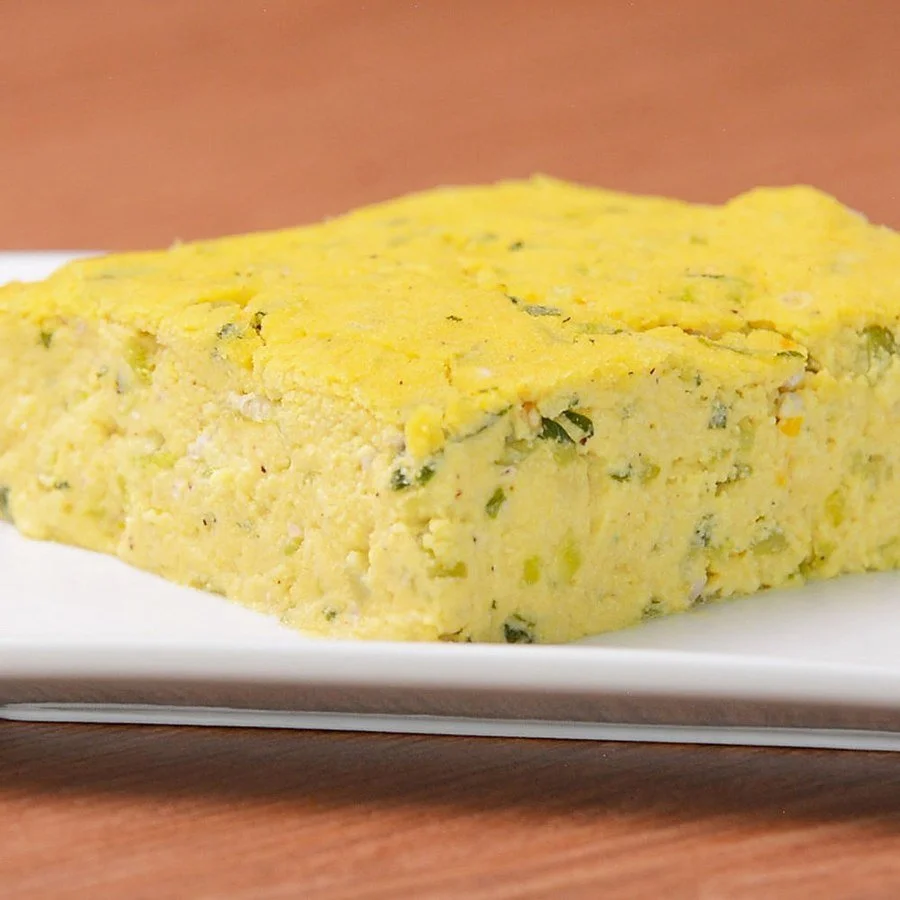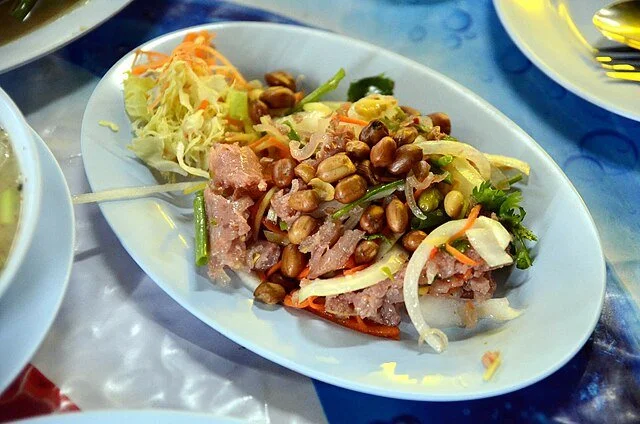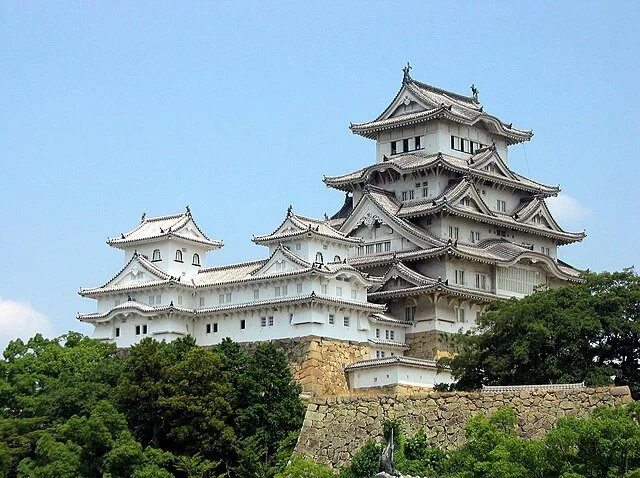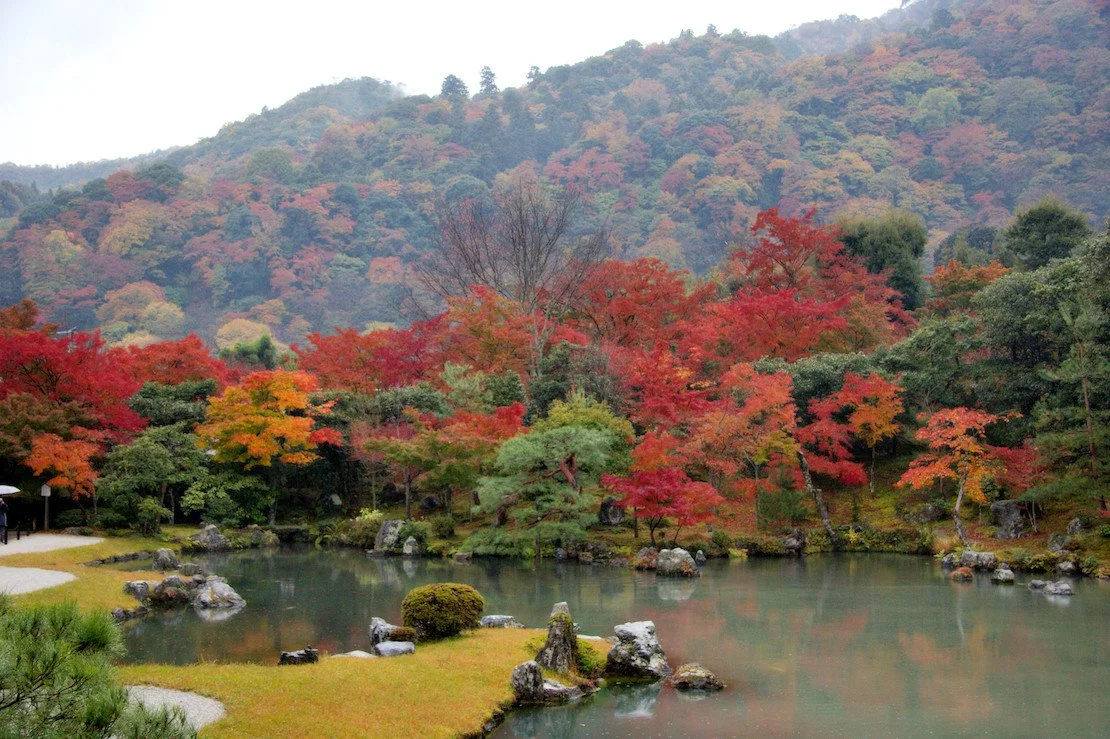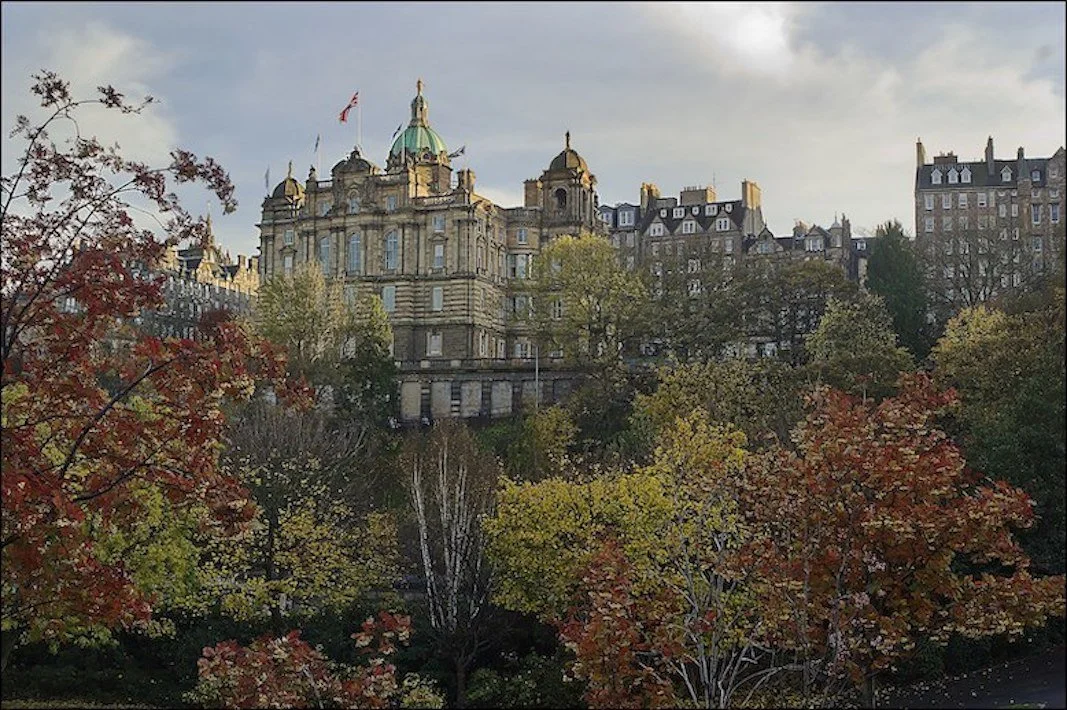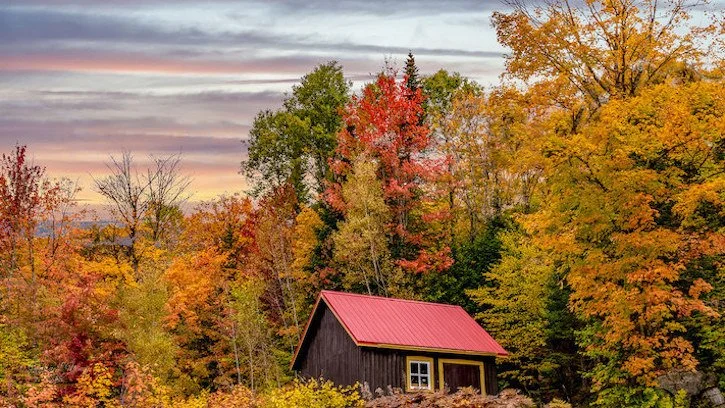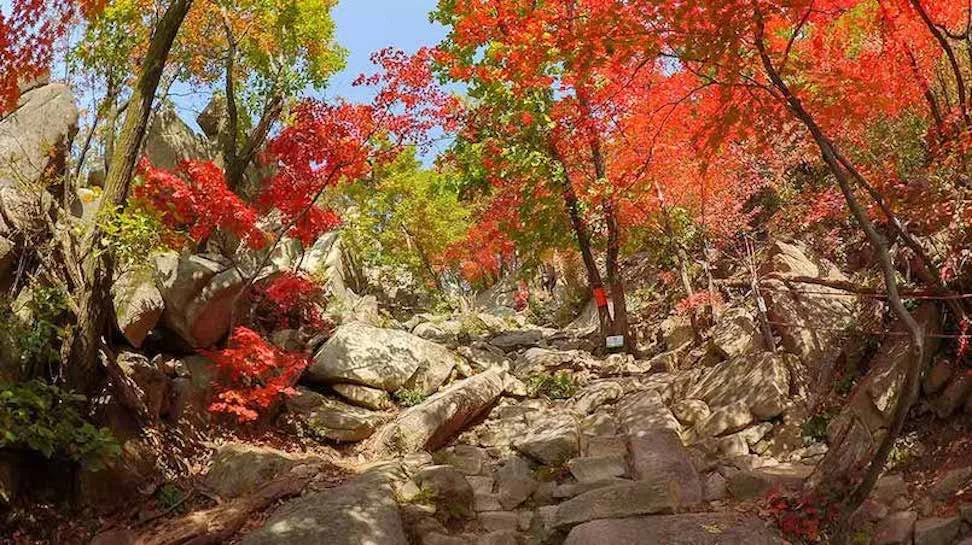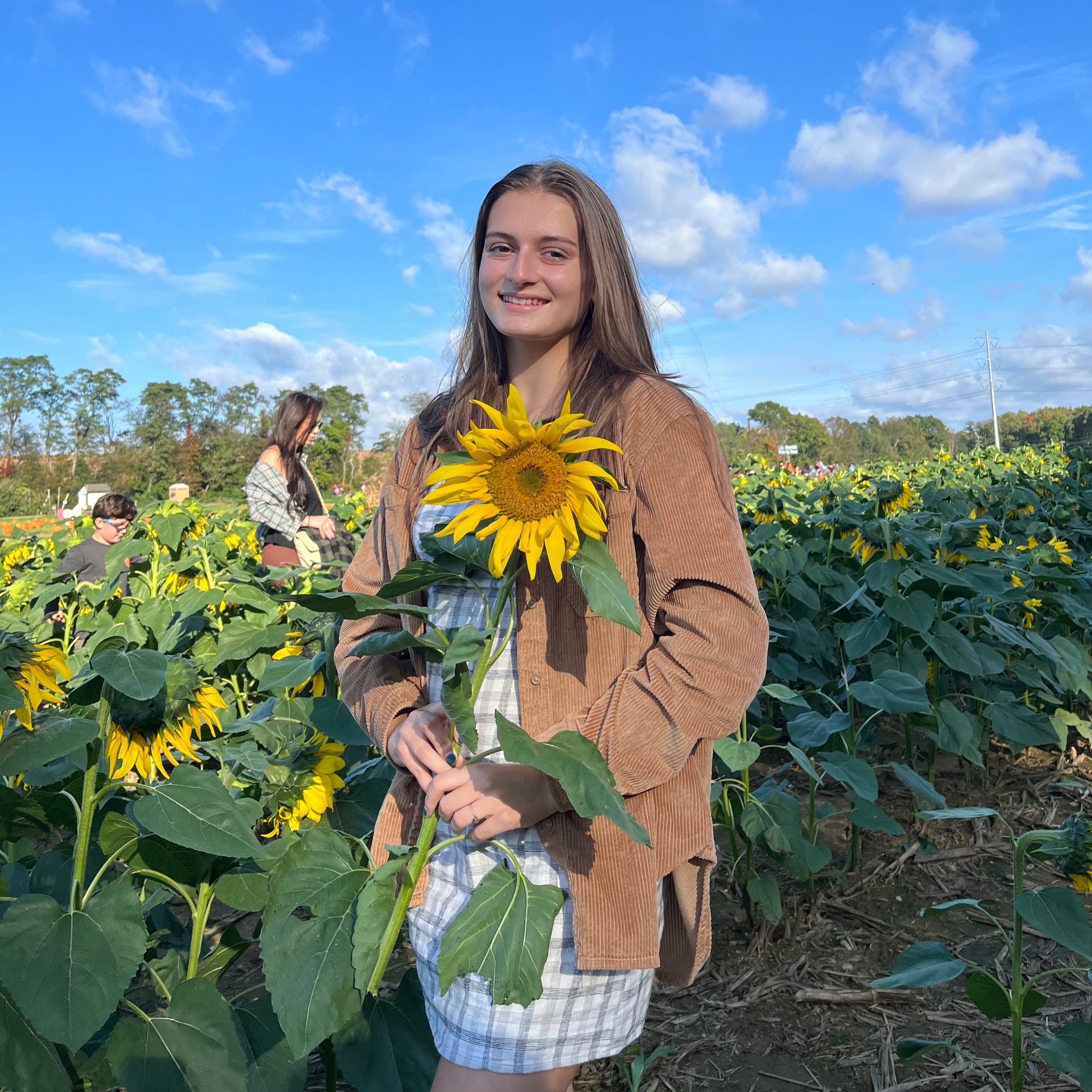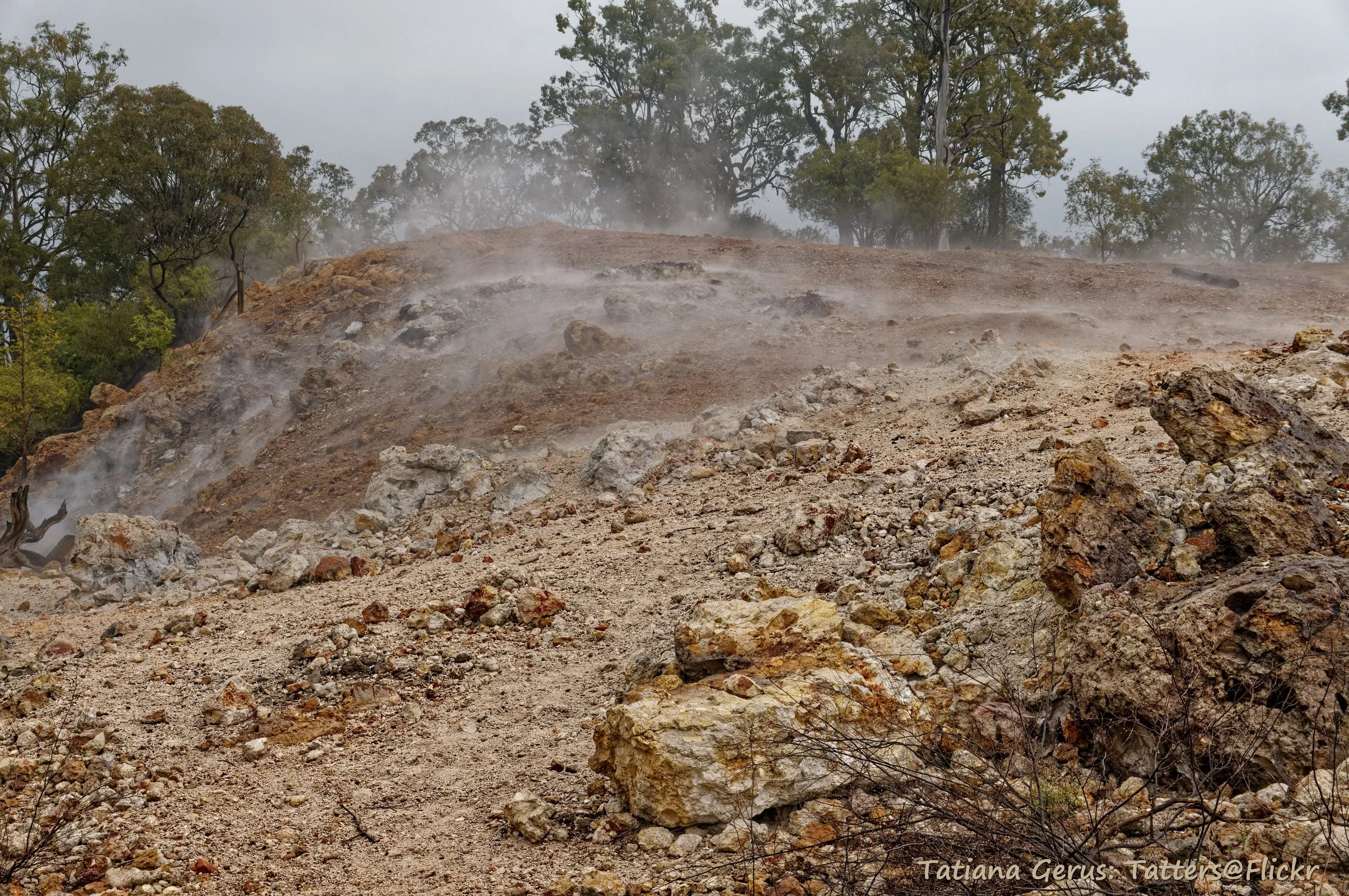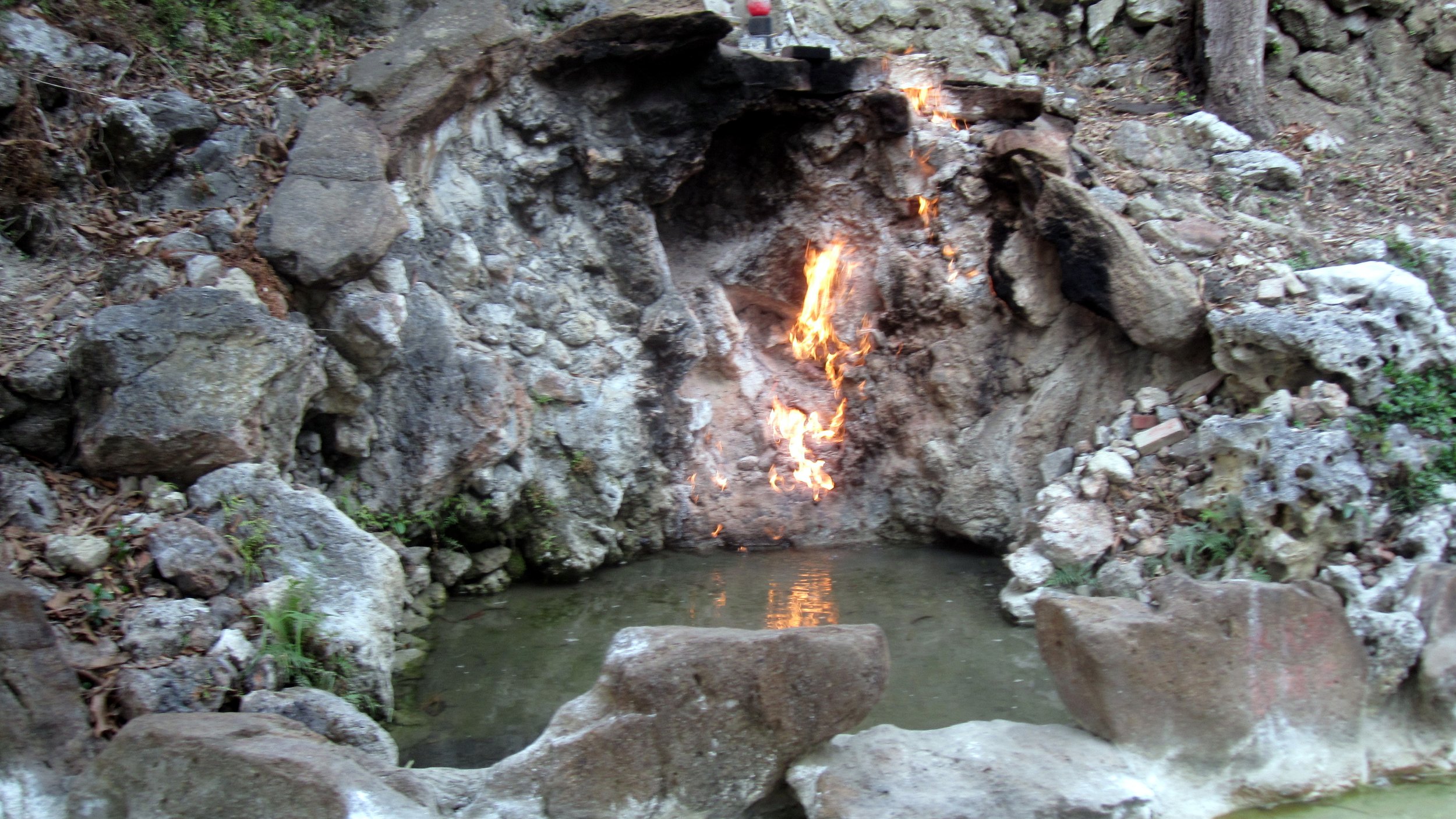As urban spaces dominate more and more of the world, it is important to remember the natural beauty the Earth has to offer. Here is a list of 7 less popular but equally enchanting wonders.
Read MoreThe Fight Against a Sinking City: Jakarta’s Sea Wall
Julia Kelley
While Indonesia’s government seeks to build a large sea wall to protect Jakarta from detrimental floods, criticism in the name of environmental and economic loss urges them to look for other solutions.
Flooding Ciliwung River in Jakarta Region. World Meteorological Organization. CC BY-NC-ND 2.0.
On the northwest coast of Indonesia stands Jakarta, the country’s capital and largest city. Sitting upon a low, flat alluvial plain with swampy areas, Jakarta is notably susceptible to major floods every few years from its multiple rivers and the adjoining Java Sea. This is made worse by excessive groundwater extraction and rising global sea levels, which have seen a worldwide mean increase of about eight to nine inches since 1880 due to global warming. Rapid urbanization, population growth and a change in land use have crowded more and more people into high-risk floodplain areas, leaving thousands displaced and large parts of the city submerged underwater during these natural disaster events. Although the Indonesian government built a coastal wall in 2002 to combat this, its collapse in a storm only five years later renewed the call for protective measures against destructive flooding. A new mega-project began in 2014, outlining both the construction of a new 29-mile-long sea wall and the so-called “Giant Sea Wall.” This “Giant Sea Wall,” a 20-mile-long artificial island shaped like a Garuda bird, Indonesia’s national symbol, will not only block storm surges but is also planned to contain homes, offices and recreational facilities.
This massive undertaking officially kicked off in February 2025 and is said by supporters to be key in dealing with the country’s land subsidence and flooding. Both President Prabowo Subianto and Minister of Infrastructure and Regional Development Agus Harimurti Yudhoyono claim that the project could save the government billions of dollars in disaster mitigation over the following 30 years. Despite this optimism, critics have come out against the large project, citing an array of detrimental economic and environmental issues that could result from construction. For example, many have noted how the proposed solution does not address the over-extraction of groundwater, which comes from excessive use by industrial and economic activities. In addition, the sea wall could disrupt marine biodiversity and, subsequently, the fishing industry, one of Indonesia’s strongest monetary sources. According to Maleh Dadi Segoro, a coalition of environmental and social groups, the sea wall would potentially narrow and close fishing catch areas, disrupting marine ecosystems and threatening the livelihoods of those who depend on them for food and income. Jakarta already faces low water quality in its rivers and canals, causing sewage and a lack of proper sanitation. Closing off Jakarta Bay for this sea wall, critics say, would turn the water into a “septic tank” or “black lagoon,” which necessitates a stronger water sanitation system immediately.
Controversy stirred up by the sea wall proposal has thus solicited alternative solutions. There has been an interest in using the water to its advantage, rather than working against it. This would entail diverting surplus waters, including that from floods, to surrounding farm areas where it could be stored. Restoration has also been widely proposed, as described by professor of oceanography Alan Koropitan for The Guardian: “If, instead, we can restore the bay and its polluted waters, that would mean something good for civilization in Indonesia.” Among all these suggested plans, environmental, social and economic protection are set at the center, urging the Indonesian government to rethink its monumental and costly plan.
GET INVOLVED:
Those looking to help support those affected by floods and flood prevention in Indonesia can do so by checking out relief organizations, such as The International Federation of Red Cross and Red Crescent Societies’ Disaster Response Emergency Fund, Peace Winds and Mercy Corps, all of which provide immediate and long-term support. Furthermore, individuals interested in combating sea level rise can look into taking actions that counter global warming, including using renewable energy, reducing greenhouse gas usage, considering electric vehicles, recycling, decreasing food waste, keeping the environment clean, or getting involved with local communities and government to organize plans and legislation.
Julia Kelley
Julia is a recent graduate from UC San Diego majoring in Sociocultural Anthropology with a minor in Art History. She is passionate about cultural studies and social justice, and one day hopes to obtain a postgraduate degree expanding on these subjects. In her free time, she enjoys reading, traveling, and spending time with her friends and family.
Colombia: The Deadliest Nation for Environmentalists
Colombia remains the deadliest country for environmental defenders, with 79 of the 196 documented murders occurring there in 2024, largely targeting Indigenous and Afro-descendant communities.
Read More6 Surf Hostels Around the World
These budget-friendly accommodations offer more than a bed—they provide a community connection that unites oceans.
Main entrance of Playa Jaco, Costa Rica. Armando Olivo Martín del Campo. CC BY-SA 4.0
Wake up to crashing waves, grab your board, and paddle out. Surf hostels are not just places to rest your head; they’re miniature global hubs where travelers, surf enthusiasts and adventure seekers converge. Whether you’re a solo backpacker or part of a group, surf hostels foster friendships and shared experiences such as communal dinners, bonfires on the beach, and impromptu jam sessions with fellow travelers.
Hostels often offer surfboard rentals and lessons, making it an easy way to pick up new skills. Each hostel has its unique flavor, influenced by its location and culture. From Bali’s laid-back vibes to Portugal’s rugged beauty, you’ll taste local cuisines, explore places through their waters and witness unforgettable sunrises and sunsets.
1. 99 Surf Lodge - Popoyo, Nicaragua
Surfing in Popoyo, Nicaragua. Dylan Wooters. CC BY-SA 2.0
99 Surf Lodge in Popoyo, Nicaragua, is a sleek, low-slung modernist hotel that perfectly balances style and unpretentiousness. Situated right on the legendary surf beach of Popoyo, it offers a unique blend of comfort and adventure in a region that is hospitable yet not overdeveloped. Each room boasts an ocean view, allowing guests to check surf conditions from the comfort of their beds. The bungalows and suites, which can accommodate up to four guests, feature private verandas to enjoy the constant offshore breeze. Despite its design-hotel aesthetics, 99 Surf Lodge remains affordable, making it a great value destination. Surfing is the main attraction, but guests can enjoy various water activities and nearby mountain hikes. The hotel’s gym and the on-site restaurant, Taberna 99, provide additional amenities to fuel and rejuvenate guests. With yoga classes, retreats and two seasonal restaurants, including Mesquite, 99 Surf Lodge ensures a memorable stay. Whether surfing, dining or simply relaxing, this beachfront retreat perfectly blends modern comfort and natural beauty. 99 Surf Lodge is a higher-end surf hostel and rates start at $130 per night.
2. San Sebastian Surf Camp (Stoke Travel) - San Sebastian, Spain
Scenic view from the comb of the wind ride to the Ondarreta beach. Laura Peña. CC BY-SA 3.0
San Sebastian Surf CAMP, an all-inclusive surf house in the Spanish Basque Country, offers an exhilarating blend of surf, yoga, and vibrant nightlife. Since 2005, Stoke Travel’s Surf Camps have been the go-to destination for exploring San Sebastian and the Basque Country, providing an unbeatable combination of surfing and partying. Now located in a converted Basque farmhouse near Zarautz, the camp has only improved. The communal atmosphere is enhanced by staff who double as surf instructors and prepare all meals, ensuring a seamless experience. The basic package includes dorm accommodation in the scenic Pagoeta nature reserve, healthy homemade meals, daily pickups to Zarautz, introductory surf lessons, and daily yoga classes. Guests can also enjoy unlimited access to surf equipment, local activities, and an open bar for a small fee. With hearty home-cooked meals, welcoming vibes, and awesome parties, this surf camp promises an unforgettable experience. San Sebastian Surf CAMP offers a unique and immersive adventure in a stunning natural setting. There is a two-day minimum and rates start at $50 per night. Get in touch with San Sebastian Surf Camp (Stoke Travel) here.
3. Hostel & Surf Camp 55 - Ericeira, Portugal
Surfing at Praia do Matadouro. Web Summit. CC BY 2.0
Hostel & Surfcamp 55 in Ericeira, Portugal, is a fantastic destination for surfing beginners, embodying the slogan “When you feel the Ericeira 55 vibe you don’t want to leave…” Overlooking the ocean and located in the heart of Ericeira, this unique hostel offers a true surf and travel experience. It accommodates up to 22 guests in seven thematic rooms with sea views, providing a relaxed and colorful atmosphere. Guests can enjoy surf lessons, guiding and equipment on-site, as well as daily yoga retreats. The communal lounge area is perfect for socializing, and the shared kitchen allows guests to prepare their own meals or join themed dinners and wine tasting sessions. Located just a five-minute walk from the beach, Hostel 55 also offers free WiFi and various discounts on local activities, including bicycle and board rentals. With clean facilities, friendly staff, and a vibrant communal feel, Hostel & Surfcamp 55 ensures an unforgettable stay in the picturesque fishing village of Ericeira. The nightly rate is $40 and you can contact them here Hostel & Surf Camp 55.
4. Farm Hostel - Canggu, Indonesia
Young surfers in Bali, Indonesia. Tiket2. CC BY 2.0
The Farm Hostel in Canggu, Indonesia, offers an exceptional experience for travelers. With five different types of dorms, all air-conditioned and equipped with en-suite bathrooms, the hostel ensures maximum comfort and privacy. Each bed is larger than average, featuring curtains, a reading light, an international power outlet, and a large locker for personal belongings. Located just 1.2 miles from Batu Bolong Beach and Canggu Beach, The Farm Hostel provides accommodations with an outdoor swimming pool, free private parking, a garden and a shared lounge. Guests can enjoy free WiFi, a bar, and a restaurant serving international cuisine with vegetarian, dairy-free, and vegan options. The hostel also offers a paid airport shuttle service.
Nestled at the end of a peaceful cul-de-sac surrounded by rice fields, banana trees, bamboo and a running stream, The Farm Hostel is a tranquil retreat. Despite its serene location, it is just minutes away from great surf spots, tasty food, vibrant nightlife, and excellent coffee. Since its opening in 2015, The Farm has grown from 22 beds to 118 beds, featuring nine mixed dorms and seven female dorms. With high-speed internet, a small breakfast included, two pools, multiple common areas and a central location in Canggu, The Farm Hostel is a must-stay destination in Bali and rates start at $36 per night.
5. Rosemary Hostel - Florianópolis, Brazil
Praia Mole, Florianopolis, SC, Brasil. Papa Pic from Eldorado, Argentina. CC0
Rosemary Hostel in Florianopolis, Brazil, offers a unique and empowering experience for travelers. Located just a minute’s walk from Trilha Da Galheta and a short distance from Praia da Barra da Lagoa, this hostel provides an ideal setting for reconnecting with nature. With eight rooms featuring climate control, private balconies and mini fridges, guests can enjoy a comfortable and convenient stay. The hostel is well-connected to local attractions, including the Open Sea Turtle Museum and Barra da Lagoa Natural Pools. Guests can savor South American cuisine at the nearby Restaurante Maria & Maria or explore the vibrant Praia Barra da Lagoa district. Rosemary Hostel is designed to challenge both body and mind, offering exceptional accommodation, healthy meals and inspiring activities. Whether you’re looking to relax or embark on an adventure, Rosemary Hostel promises a memorable stay with its international family, the Dream Team. The Rosemary Hostel’s nightly rates begin at $33, and there are several different types of accommodation.
6. ITH Beach Bungalow Surf Hostel - San Diego, CA, USA
Surfing in San Diego, California. Bengt Nyman. CC BY 2.0
ITH Beach Bungalow Surf Hostel in San Diego offers an unparalleled experience right on the boardwalk overlooking the ocean in Pacific Beach. Known for its cozy beds, beachfront facilities, and friendly hosts passionate about showcasing local culture, this hostel invites guests to bring their beach clothes and flip-flops and immerse themselves in the surf lifestyle. The hostel emphasizes sustainable lodging, cultural contact and providing a unique hosted experience. Guests can enjoy oceanfront accommodations just 1.9 miles from Belmont Amusement Park, with amenities including BBQ facilities, a garden and a shared lounge. A daily free continental breakfast is provided, featuring bread, fruit, cereal, oatmeal and coffee. The hostel also offers a 24-hour front desk, indoor lounge with workstations and table tennis. With several room options, including female-only, coed dorms, and private rooms, all with ensuite bathrooms, ITH Beach Bungalow Surf Hostel ensures a comfortable stay. The large private outdoor deck is perfect for socializing, checking out the waves and soaking up the sunshine. Hosted social events, surfboard, wetsuit and bike rentals, as well as partnerships with top-rated wellness and yoga studios, make this hostel a legendary spot for travelers since the 1980s. Whether you’re surfing, relaxing or exploring, ITH Beach Bungalow Surf Hostel promises a social, friendly, and fun atmosphere with rates starting at $49 a night
Julz Vargas
Julz is a student at Wellesley College studying Anthropology and Spanish. She grew up in Los Angeles, CA, and has studied all around the world in places such as Costa Rica, Greece, Iceland, and Spain. She is passionate about employing writing as a tool to explore human connection and diversity. Julz aspires to foster cross-cultural connections through community-based research, amplifying inclusive and diverse media about global cultures, foods, and people, to encourage individuals to engage more wholly with the world.
Lights, Camera, Action: 7 of the Best International Films
With the 2024-2025 movie awards season in full swing, let’s look at what filmmakers had the world watching — and discussing — last year. This article highlights seven international films from the past year, each transcending borders and language barriers to tell untold stories, raise global awareness, and reveal universal truths.
Read More6 Tropical Countries To Escape the Winter Chill
Avoid the cold temperatures of winter by taking off to these six tropical destinations around the world, each offering a lush climate and magical adventures.
Read More10 International New Year Food Traditions that Bring Good Luck
A plethora of ways cultures worldwide celebrate the new year through delicious cuisine.
Read MoreTunisian girls wearing traditional Tunisian dress including the sefseri, a white veil made of silk or wool. Sami Mlouhi. CC BY-SA 4.0.
6 Treasures of Tunisia, From 'Star Wars' to Desert Oases
Tunisia is a country in North Africa, a region known as the Maghreb, that is similar in culture, history and religion to Morocco and its neighbor, Algeria. Tunisia is one of the most visited countries in Africa – it is a popular vacation destination for Libyans, Algerians, the French, Germans and the British. The country’s official language is Arabic, but the local Tunisian Arabic dialect,darija,, and French are also commonly used. The majority of Tunisians are Muslim, though a small Jewish community lives on Djerba, North Africa’s largest island.
The tiny country offers a variety of landscapes – beaches, mountains, the desert, woods and salt pans – that are sure to appeal to all types of travelers. The museums and ancient Roman ruins are sure to appeal to history buffs, and die-hard “Star Wars” fans will be interested to know that many scenes on the planet Tatooine were filmed in Tunisia. Be ready to enjoy dishes flavored with harissa, a spicy red pepper paste that has recently become popular in the U.S., along with plenty of seafood and Maghrebi staples such as couscous and syrupy doughnut-like bambalouni and zlebia.
Minerals from Atlas Mountain runoff give Chott el Djerid its pink hue. Vinzenz Mühlstein. Public Domain. CC0
1. Chott el Djerid
The fictional planet Tatooine from the “Star Wars” saga was named after Tataouine, a desert city in Tunisia. Although no scenes were filmed in the real Tataouine, many of the first “Star Wars” film’s scenes were filmed in cities all over Tunisia. One of the most notable scenes of Tatooine is of Luke Skywalker’s home, the exterior of which was filmed in Chott el Djerid, the Sahara’s largest salt pan. A chott, or salt lake, stays dry for the majority of the year but fills intermittently from infrequent rainfall and during the spring thaw when water runoff from the Atlas Mountains floods the basin. The dissolved minerals from the Atlas Mountains give Chott el Djerid its otherworldly cotton candy pink color.
Remains of the Lars Homestead on one of the “Star Wars” movie sets in Chott el Djerid. Stefan Krasowski. CC BY 2.0.
Ancient Berber underground homes in Matmata, Tunisia. Tanya Dedyukhina. CC BY 3.0.
2. Matmata
When “Star Wars: A New Hope” was released in 1977, Matmata, a small Berber village in southern Tunisia, became famous for its underground cavelike homes where some of the local residents still live. (The Berber, or Amazigh, are an ethnic group native to Northwest Africa, particularly the Maghreb.) The interior of Luke Skywalker’s home was filmed in the courtyard of Hotel Sidi Idriss, an underground hotel in Matmata. The hotel is open year-round, and is a must-visit for any die-hard “Star Wars” fan. For those who are not “Star Wars” fans but still want to visit the cave dwellings, the Musée Berbère de Tamezret (about six miles from Matmata) is a great alternative option.
The dome of the Great Mosque of Kairouan houses the mihrab, or structure that points out the direction in which Muslims pray. Colin Hepburn. CC BY-SA 2.0.
3. Kairouan
Kairouan, a UNESCO World Heritage Site, is considered by some to be the fourth holiest site in Islam, after Mecca, Medina and Jerusalem. The city, founded by the Umayyads in 670, is the most ancient Arab-Muslim center in the Maghreb. Kairouan began as a military camp, but soon became an important center for Islamic scholarship, religious sciences, and art. The city contains many mosques, but the most important is the Great Mosque of Kairouan, also known as the Great Mosque of Uqba. The mosque contains a courtyard and a prayer hall, as well as a 105-foot minaret that bears resemblance to a Syrian bell tower or an ancient Roman lighthouse.
Another site that cannot be missed when visiting Kairouan are the Aghlabid Basins, a sophisticated feat of engineering and the largest hydraulic installation of the Middle Ages. Originally, there were 16 pools that provided water for Kairouan, but today only two reservoirs remain. Nearby, Kairouan’s souk has countless vendors who sell everything from snacks and jewelry to carpets and leather goods.
The Chebika oasis lies at the bottom of the Djebel el Negueb Mountains. Remi Jouan. CC BY-SA 3.0.
4. Chebika
Built on what was once a Roman military post, Chebika is a small village that sits right above a palm oasis at the foot of the Djebel el Negueb, which are part of the Atlas Mountains. At the top of the mountain, one can see the oasis, the village, and Chott el Gharsa, a salt lake that lies near the Algerian border (and served as a movie set for “Star Wars: The Phantom Menace” and “The English Patient”). Visitors can hike up the canyon to a small waterfall where they will be greeted by a beautiful view of bright green palm trees standing starkly against the mountainside.
Hôtel Bou Fares and storefront in Sidi Bou Said. Allain Muller. CC BY-SA 2.0.
5. Sidi Bou Said
Sidi Bou Said is known for its blue and white theme, common to other Mediterranean-region cities and towns. The beautiful cerulean doors, shutters, gates and decorative balconies against the whitewashed buildings mirror the bright sky and the Mediterranean Sea which lies below the cliffside town. Sidi Bou Said was established as a religious sanctuary in the 13th century by Abu Said al-Baji, after whom the town was named. The palace Ennejma Ezzahra, finished in 1921 by French painter and musicologist Rodolphe d’Erlanger, is now a museum one can visit to see the beautiful architecture, view paintings by the baron, and see a treasure chest that was reportedly once owned by Suleiman I of the Ottoman Empire. Within the palace is the Centre des Musiques Arabes et Méditerranéennes (Center for Arab and Mediterranean Music), which houses a collection of musical instruments and art, and acts as a concert venue.
Traditional blue door in Sidi Bou Said surrounded by purple bougainvillea. Benrais. CC BY-SA 3.0.
Korbous was frequented by the ancient Romans of Carthage as a health resort. Patrick Giraud. CC BY 3.0.
6. Korbous
If you enjoy spas and natural hot springs, head for Korbous – a single street clinging to a cliff face on the west coast of Cap Bon. The mineral-rich hot springs of Korbous have been a popular spa and health resort since the time of the ancient Romans of Carthage, as evidenced by an inscription on display in the National Bardo Museum in Tunis. Korbous was not a popular spa destination until the 19th century, when Ahmed Bey, the last Ottoman leader of Constantine, had the hammam, or Turkish bath, built. In addition to the hot springs, mud from Aïn Kanassira, rich with minerals, is used to treat arthritis, various skin diseases and other health issues.
Asiya Haouchine
Asiya is an Algerian-American writer who graduated from the University of Connecticut in May 2016, earning a BA in journalism and English. She was an editorial intern and contributing writer for Warscapes magazine and the online/blog editor for Long River Review. She is currently studying for her Master’s in Library and Information Science. @AsiyaHaou
Beyond the Caribbean, 10 Tropical Escapes the World Over
For those looking to escape frigid winter temperatures, these 10 destinations will satisfy wanderlust while offering tropical climates, beaches, diverse cultures and more.
Read More7 Holiday Foods From Around the World — With Recipes
Spice up this holiday season by preparing one of these mouthwatering global cuisine dishes, recipes included!
Dongzhi (Winter Solstice) Festival Food, Tangyuan. Cats Coming. CC0.
Let’s face it: the holiday season can be stressful. Whether you’re preoccupied with finding the perfect gift for your mother-in-law or figuring out who is hosting your annual family holiday party, sometimes the warmth of this season of festivity gets lost. What won’t be stressful this year, however, is finding a new, unique recipe to try out. These seven holiday foods from around the world will keep everyone’s taste buds happy — even your in-laws! Whether your family prefers the coziness of a sweet treat or a savory dish that packs a punch, there is something on this list for everyone.
France — Buche de Noel
A Buche de Noel Cake with an intricate spiral. Mitantig. CC by 4.0.
Starting off strong with a chocolate lover’s dream, buche de Noel is a sugary confection that hails from France. Also known as a Yule Log, this confection is a rolled chocolate cake filled with rich cream. Both its shape and color are meant to resemble a—you guessed it—log. The dessert’s unconventional shape, however, is completely intentional. The history of the desert can be traced back to feudal taxes in medieval France, whereby peasants would bring logs to the homes of both feudal lords and their own families. Other accounts of the dessert’s history claim that families burned logs in their own home as a pagan rite to ensure a bountiful harvest for the coming year. In any case, Mon Petit Four provides a traditional recipe here.
2. Italy — Feast of the Seven Fishes
A seafood market in Genoa, Italy. Dade Rot. CC0.
A polar opposite of the sugary-sweet Buche de Noel Cake, Italy’s Feast of the Seven Fishes combines salty and savory flavors to create an elaborate selection of seafood dishes. On Christmas Eve, Italians and Italian-Americans gather around their kitchens and partake in this intergenerational tradition. Although the types of seafood dishes vary from family to family, the bonding and warmth that cooking this meal facilitates is universal. Whether plating more simple shellfish or an elaborate seafood pasta, however, the dishes hold a sense of significance. Both Italy’s long coastlines and large Roman Catholic population (many of whom either do not eat meat on Friday or on the eve of some holidays) have contributed to the beginnings of this tradition. A variety of seafood recipes featured in this iconic feast can be found here.
3. India — Gulab Jamun
Gulab Jamun. Cabeza2000. CC by 4.0.
Although this dessert is eaten on a variety of celebratory occasions—including birthdays and marriages—it is also eaten during Hindu holidays such as Diwali. Although this year's Diwali has already passed, gulab jamun is still the perfect treat to make during the winter months. These sphere shaped sweets are made of deep fried flour and khoya (dried, thickened milk), and can be eaten both cold or hot. Often they are served swimming in a sugar mixture and have a semi-sticky consistency. This dessert is popular in India as well as Pakistan, Nepal and the Maldives. Moreover, the gulab jamun is similar to the Arabic dessert Luqmat-al-Qadi. A simple, yet thorough, recipe to make gulab jamun can be found here.
4. West Africa (Senegal) — Jollof Rice
Jollof Rice Served with Plantains. Bukky658. CC by 4.0.
Jollof Rice Served with Plantains. Bukky658. CC by 4.0.
Another versatile dish, jollof rice is eaten during a variety of occasions in many different countries. Although its origin is disputed, the dish is believed to have come from the Wolof people of Senegal in West Africa—the word jollof comes from the Wolof language and can be translated as “one pot.” Indeed, in this meal many vegetables, including bell peppers and tomatoes, are combined with rice and cooking oil in a pot. Jollof's orange tint comes from these vegetables as well as fragrant spices such as turmeric and paprika. During the holiday season, jollof rice is commonly served among families who celebrate Christmas or Kwanzaa. Moreover, the dish is common in many African countries, including (but not limited to) Nigeria and The Gambia. More detailed information about spices and vegetables to include can be found in this recipe here.
5. Mexico — Tamales
Tamales wrapped in corn husks. Richard Elzey. CC by 2.0.
Cooking tamales isn’t simply about creating food; it also involves forging a sense of togetherness. Many Mexican and Mexican-American families come together every December to make this corn-based dish. Tamales can be traced back to Indigenous people in Mesoamerica, who offered bundles of corn as sacrifices to the gods. Today, families make tamales throughout the month of December leading up to Christmas. Tamales can be stuffed with a variety of meats, such as chicken or beef, as well as vegetarian-friendly beans and cheese. Traditionally, tamales are wrapped and cooked in corn husks or banana leaves, but these wrappings are not eaten. An authentic pork tamale recipe can be found here.
6. Australia — Grilled Prawns
Prawns with a lime garnish. Rasheed Rasheed. CC by 4.0.
In some places around the world, the holiday months trade in snowflakes for seasides and warm temperatures. Down under in Australia, seafood fills festive dinner menus because many winter holidays for those living in the Northern Hemisphere fall during the Southern Hemisphere's summer months. To stay cool, Australians will grill prawns outside rather than using their ovens to cook a traditional, elaborate holiday meal. In fact, during the month of December Australians consume 40% of their yearly prawn intake. Most families like to keep it simple and dress their prawns in garlic, lemon juice or olive oil to keep their feast refreshing and light during sweltering heat. A delicious, garlicky prawn recipe can be found here.
7. China — Tangyuan (Glutinous Rice Balls)
Tangyuan served in syrup. Wu Xiao. CC0.
The Dongzhi, or Chinese Winter Solstice Festival, would not be complete with Tangyuan. These glutinous rice balls are often filled with sesame paste, and have a nutty and semi-sweet flavor. This food has been eaten for at least over 1,000 years, although its origin is disputed; one possible account is that Tangyuan was either created or popularized during the Song dynasty. And, to keep warm during the solstice, the rice balls are always served warm. Their texture is similar to and yet less dense than mochi. A simple, quick recipe can be found here.
Carina Cole
Carina is a Media Studies student with a Correlate in Creative Writing at Vassar College. She is an avid journalist and occasional flash fiction writer. Her passion for writing overlaps with environmentalism, feminism, social justice, and a desire to travel beyond the United States. When she’s not writing, you can find her meticulously curating playlists or picking up a paintbrush.
10 New Year’s Traditions Around the World
From eating 12 grapes before midnight in Spain to drinking champagne with ashes and planting underwater trees in Russia, check out these 10 countries and how they celebrate the New Year in different ways. You might find some new ideas for your own New Years in 2024.
Read MoreWander Women: 6 of the Safest Destinations for Solo Female Travelers
Around the world, solo trips are becoming increasingly popular. Here are some of the safest places for women to explore on their own.
Woman sightseeing alone. Ibrahim . CC-BY-2.0.
Solo travel offers opportunities for both self-discovery and world discovery, an enriching experience that satiates an inner wanderlust just as much as it does an outer one. However, given the high rates of gendered violence around the world, there are certain things that women have to take into heavier consideration — such as a destination’s night-walking safety and rates of sexual assault and abduction — before booking a solo trip. Based on their low crime rates and the unique, worthwhile adventures they have to offer, the places on this list highlight some of the safest destinations for solo female travelers.
1. Bali, Indonesia
Nusa Penida. Aaron Rentfrew. CC-BY-4.0.
Featuring thousands of temples and miles of beaches and forests, Bali offers the solo wanderer countless opportunities to reconnect with nature. Active adventurers can hike alongside numerous natural wonders across the island, sighting waterfalls at the Beji Guwang Hidden Canyon and monkeys at the Ubud Monkey Forest. If you’re drawn to Bali’s aquamarine coastlines instead, scenic beaches like the Tanah Lot and Nusa Penida are renowned swimming and snorkeling spots. There are also opportunities to tour some of the island’s many temples, including Pura Lempuyang and Gunang Kawi, and to take cooking classes on the Tegalalang rice fields. Bali is a popular destination among solo female travelers, especially after it was featured in Elizabeth Gilman’s best-selling memoir “Eat, Pray, Love.” Indeed, solo female travelers attest that Bali is safe for women, citing its low levels of street harassment and high flow of other tourists. It’s also common for solo female travelers to socialize and explore Bali in groups. Bali also has well-developed infrastructure and a ride-sharing app network that’s both popular and reliable, which makes navigating the island generally safe and manageable.
2. Iceland
Gullfoss Waterfall. Patano. CC-BY-3.0.
Iceland has emerged as an increasingly popular travel destination in recent years and for good reason. Travelers have flocked to Iceland to glimpse puffins amidst the fjords, soak in the country’s blue lagoons and tour its volcanoes (which, while more active than usual as of late, are still safe to visit). As for getting to these sites, “the Icelandic Road system is extensive and easy to navigate,” the official Visit Iceland website boasts. A car can get you almost anywhere, and the country’s drivability is a key part of its safety. For solo women, renting a car and driving yourself minimizes the risk of abduction and taxi scams while increasing traveler independence and flexibility. Many tourists say renting a car is the best way to explore Iceland because it enables travel along the Ring Road, an 800-mile scenic route that circles the country and connects its most popular attractions (including Thingvellir National Park, the Geysir geothermal area and Gullfoss waterfall). The Ring Road, specifically, is safe for solo travel because the roads are well-maintained and well-populated with other travelers. In general, Iceland is one of the safest countries in the world. It’s recommended that travelers visit during the summer when daylight lasts longer and the roads are less icy.
3. Chiang Mai, Thailand
Downtown Chiang Mai. Uwe Arenas. CC-BY-4.0.
Thailand is a notably affordable travel destination due to the country’s low labor costs, making it a popular destination of choice for solo travelers. Within Chiang Mai — the largest city in northern Thailand — visitors can see countless sights, including waterfalls and pagodas. Temples like Wat Phan Tao have low admission prices, as do nature excursions like Doi Inthanon National Park. If travelers want to indulge in Thailand’s signature elephant tourism, they can do so ethically at Elephant Nature Park, an animal rescue and rehabilitation center. Thailand is generally safe, with a few exceptions due to civil unrest. But Chiang Mai, a tourist hub, is considered the safest city in Southeast Asia — especially within Chiang Mai’s walled core, the Old City. In fact, many say the most dangerous thing a traveler can do in Chiang Mai is simply cross the street. Driving in Chiang Mai can be chaotic, which is why ride-share apps (specifically a Southeast Asia-based one called Grab) are recommended. “Tuk tuk scams” — deceptively cheap taxi rides — can also be avoided with the use of a ride-share app. In general, it’s recommended that solo female travelers stick to the Old City, where the roads are safer for pedestrians and better-lit at night and visit from November to February to avoid poor air quality during Thailand’s “burning season.”
4. Prague, Czech Republic
View of Prague from the Old Town Hall. Alexander Savin. CC-BY-4.0.
Known as the City of a Hundred Spires, Prague brims with storybook scenery. Beyond the many towers dotting the Czech Republic’s capital city, tourists can also visit the Prague Botanical Garden and the Prague Zoo or even take a brewery tour. If travelers want to take in the ornate architecture that Prague is famous for, Prague Castle, the Charles Bridge and the Old Town Square featuring the Prague astronomical clock are especially rich sites to experience the city’s baroque and gothic past. As a historic city, Prague is compact and walkable. However, that’s not to say that the city doesn’t also have modern amenities to offer, as Prague’s metro and tram are among some of the world’s safest and most reliable public transport systems. The city has plenty of safe hostels, street lighting and low levels of street harassment, making Prague especially safe for solo women.
5. Antigua, Guatemala
Santa Catalina Arch. Chad Davis. CC-BY-2.0.
Although Guatemala as a whole may not be recommended for solo women travelers, the city of Antigua features a safe and vibrant environment. Antigua boasts numerous churches and archaeological ruins worth exploring, including the Cathedral de Santiago and the Santa Catalina Arch. Travelers also have the opportunity to shop for traditional artisan goods (such as custom boots), kayak at Lake Atitlan and even hike the Pacaya Volcano to roast marshmallows. Caffeine addicts will want to tour the De La Gente coffee farm to get a taste of Antigua’s famous coffee scene. Because it’s a travel hotspot, Antigua is safe compared to surrounding areas like Guatemala City. As such, it’s recommended that solo travelers stay within Antigua, which is walkable with well-lit cobblestone streets. However, if walking isn’t a sufficient mode of transportation, solo women are encouraged not to take the traditional “chicken buses” — eccentrically painted school buses — to get from place to place because their routes aren’t direct and can travel outside of Antigua. Rather, women should travel accompanied by a guide and use the reliable shuttle services offered by many hostels.
6. Taipei, Taiwan
Taipei skyline. Shengbo Wu. CC0.
Situated on the north side of the island, Taiwan’s capital city Taipei is a metropolitan hub of art, food and entertainment. Travelers can shop in the Xinyi District or take a trip to the top of Taipei 101 — once the tallest skyscraper in the world — for a panoramic view of the city. The National Palace Museum and the Presidential Palace, each displaying centuries-old artworks and artifacts, are also worth a visit for their valuable insights into the island’s storied history. Taipei is also famous for its night markets, where travelers can snack on traditional street foods like green onion pancakes and sweet rice cakes as they shop for trinkets beneath strings of red lanterns. The Shilin Market and the Raohe Street Market are particularly renowned. Taipei is very safe — violent crime against travelers is rare, and the streets are usually busy and well-lit. It is generally safe for women to get around solo, even at night.
Overall, a destination can be considered safe for solo female travelers if it is walkable, well-developed in infrastructure well-lit at night and bustling with other like-minded travelers. Although they have to take these additional factors into greater consideration, it’s not impossible for women to also enjoy the benefits of solo travel without significant fear for their safety. But any solo adventurer, regardless of gender, should take normal precautions when traveling. It’s important to not act recklessly and to always use common sense, especially in a foreign environment; opportunistic crimes like pickpocketing and drink-spiking can happen anywhere and to anyone.
Bella Liu
Bella is a student at UC Berkeley studying English, Media Studies and Journalism. When she’s not writing or working through the books on her nightstand, you can find her painting her nails red, taking digicam photos with her friends or yelling at the TV to make the Dodgers play better.
Unknown Specialties: 10 Little-Known Global Dishes
Uncovering some of the best lesser-known cultural foods from around the world.
Khachapuri served with nuts. Ekkatterrinna. CC BY-SA 4.0
From sushi to falafel to chicken tikka masala, most cultures are represented on the global food stage. But for every well-known cultural classic, hundreds of local delights have never quite made it out of their homeland. This list compiles ten of the best, most unique specialties that most of the world has yet to experience. Each dish will include links to recipes and can be made at home with relative ease.
1. Lahmacun
Turkey
A traditionally wrapped lahmacun. Garret Ziegler. CC BY-SA 4.0
Lahmacun is a traditional flatbread variety that incorporates minced meat (usually lamb or beef), tomatoes and red peppers, and a healthy amount of garlic and chili pepper. Despite being commonly referred to as “Turkish pizza”, lahmacun is never prepared with cheese. Instead, the dish is often served rolled up around other vegetables like pickles or roast eggplant.
2. Kare-kare
The Philippines
A bowl of kare-kare. Maffeth.opiana. CC BY-SA 4.0
Kare-kare is a stew of thick peanut sauce. Typically made with oxtail and occasionally pigs’ or calves’ feet, kare-kare also features vegetables like eggplant and daikon. Some varieties include seafood (like prawns and squid), while others are entirely vegetarian. This dish has been a part of Filipino culture for hundreds of years and is considered one of the island nation’s staple dishes.
3. Zeljanica
The Balkans
A tray of zeljanica. BiHVolim. CC BY-SA 4.0
Often referred to as “savory spinach pie,” zeljanica is a flaky pastry filled with chopped spinach, egg and white or feta cheese. This particular meal has several options for substitution; just about any white cheese (preferably salted) can be used for the filling, and a variety of pastries can be used to make the outer shell, including phyllo or horiatiko (both of which are specialties in their own right).
4. Pastitsio
Greece
A plate of pastitsio. Sam Bailey. CC BY-SA 4.0
While this dish is often referred to as “Greek lasagna,” it takes a few steps outside of the box that sets it apart from its Italian cousin. Pastitsio has evolved over the years, transforming from a phyllo-wrapped meat pasta to a layered dish. The bottom layer is composed of bucatini or similarly-shaped pasta, bound together with cheese or eggs. The second layer features ground beef or pork heavily seasoned with cinnamon and cloves, and the top is a mixture of bechamel and mornay sauce.
5. Cou Cou
Barbados
An example of Cou Cou. KINGBROBLOXZZZ. CC BY-SA 4.0
Cou-cou is widely regarded as the best example of Barbados’ national food: the flying fish. While cou-cou is actually a mixture of cornmeal and okra, it is typically served alongside steamed or fried flying fish. Today, this meal is traditionally served on Friday in Barbados and has spread to Antigua and the Virgin Islands.
6. Khachapuri
Georgia
A variety of khachapuri including egg yolk. Rorschach11. CC 2.0
There are many varieties of Georgia’s khachapuri, but the most common (and most popular) is Imeretian khachapuri. This variation is made with yeast dough and filled with salted white cheese. Other varieties incorporate egg yolks, potatoes and a variety of seasonings.
7. Nacatamales
Nicaragua
A finished nacatamal. MiguelRamirez77. CC BY-SA 4.0
Nacatamales were historically made by Nicarao hunters who would wrap and steam herbs, deer and turkey meat in corn husks. Rapidly evolving into a cultural staple after the Spanish conquest of Nicaragua, nacatamales have continued to change throughout the centuries. Today, the dish is commonly wrapped in banana leaf and tinfoil and steamed for up to five hours.
8. Nam Khao
Laos
A pre-wrapped nam khao. Takeaway. CC BY-SA 3.0
Nam khao is a common dish throughout Laos, appearing everywhere from street stalls and potlucks to high-brow restaurants. The meal’s main ingredients include fried rice balls, classic Vietnamese pork sausage, chopped peanuts and other seasonings. Nam khao is unique from traditional salads as ingredients are used to fill a singular lettuce leaf before being topped with chili peppers and herbs.
9. Lo Mai Gai
Southern China
A variety of lo mai gai made with abalone. Peachyeung316. CC BY-SA 4.0
A gluten-rich rice stuffed with chicken, sausage, mushrooms and scallions, the most unique aspect of this variation on the classic dim sum is the method of cooking. Before being steamed, lo mai gai is wrapped in dried lotus leaves — in areas where lotus is not available, banana and grape leaves are frequently substituted.
10. Jollof Rice
West Africa
A variety of jollof including vegetables. Segun Famisa. CC BY-SA 4.0
Last but certainly not least is the ever-changing meal known as jollof rice, or jollof for short. This dish has a general ingredient list, but just about every nation in West Africa has its own regional variety, which has led to friendly rivalries between different regions. Typically, jollof is made with long rice grains, incorporating tomatoes, chili peppers, and a variety of spices together into one pot. Variations of the dish can range from different spices to the inclusion of additional vegetables or cuts of meat.
Few of the dishes on this list are available outside of their home country. However, the ingredients for each dish are relatively easy to obtain, so international foodies can find all the materials they need to cook some of these specialties at home.
Ryan Livingston
Ryan is a senior at The College of New Jersey, majoring in English and minoring in marketing. Since a young age, Ryan has been passionate about human rights and environmental action and uses his writing to educate wherever he can. He hopes to pursue a career in professional writing and spread his message even further.
The Northern Lights: The 6 Best Viewing Destinations
Exploring the top locations around the world for an unforgettable aurora experience.
Arctic scenery featuring the northern lights. Stein Egil Liland. CC0.
The aurora borealis, commonly known as the northern lights, is a captivating natural phenomenon many people aspire to witness. These lights occur when charged particles from solar wind clash with oxygen atoms and nitrogen molecules in Earth’s atmosphere. The collisions result in a transfer of energy released in flashes of light.
Currently, the Arctic Circle is experiencing a solar maximum. Characterized by heightened and more frequent solar activity, a solar maximum occurs when the sun’s magnetic activity increases. This happens because of an increased flare-up of sunspots, which can cause solar flares and eruptions. Solar cycles typically average about 11 years, with the next solar maximum anticipated in 2035.
The strongest activity period for the northern lights occurs between September and April, while the southern lights’ strongest activity falls between March and September. The combination of these time periods and the solar maximum is the reason people in both Michigan and Wales have been able to witness unexpected glimpses of the northern lights all year. Only two months into the 2024-2025 solar maximum, there is still plenty of time to explore one of the following six travel destinations.
Tromsø, Norway
Travelers in a remote spot viewing the northern lights in Tromsø. Tobias Bjørkli. CC0.
Tromsø is Norway's largest northern city. Approximately 400K from the Arctic Circle, this tourism hub is often referred to as the “gateway to the arctic.” The city is located on the island of Tromsøya, lying in the Tromsøysundet strait. Although surrounded by fjords and mountains, arctic scenery is not the only thing Tromsø is famous for. When visiting, travelers can get a taste of Norway’s rich cultural life that values education and climate change activism.
Throughout northern Tromsø, there are many northern lights tours available to the public. From $93 bus rides to thousand-dollar personalized tours, there are many different ways to experience this natural light show.
Vatnajökull National Park, Iceland
Vestrahorn Mountains at Vatnajökull National Park. Francisco Diez. CC-BY 1.0.
Vatnajökull National Park is home to many glaciers, including the largest glacier in Iceland. Covering 8% of Iceland’s landmass, this glacier is up to 3,120 feet thick at its deepest point. The park’s many glaciers have created intriguing natural landscapes, such as blue ice caves that visitors can explore. Close to the country’s capital, Reykjavik, there are plenty of excursions available. The park offers tours that can be as simple as a day trip or as involved as a ten-day trek. Both give travelers the opportunity to hike throughout the national park, traverse the ice caves, visit the thermal baths and travel to hidden getaways to get the best view of the northern lights. There are also boat tours from Reyjkavick that travel around the South Coast. These trips offer distance from any light pollution, allowing for some of the best views of the northern lights.
Options for low-cost hotels include the Reykjavik Lights for $101 a night and the Center Hotels Plaza for $138 a night.
Laugarvatn, Iceland
Northern lights dazzling above a field in Laugarvatn. Marek Piwnicki. CC0.
Laugarvatn is near both Reyjkavick and Vatnajökull National Park, but location is where the similarities end. Laugarvatn is famous for its geothermal activity, hot springs and active, swimmable lake. The remarkable geothermal activity not only warms the lake but also supplies hot water to the town. Throughout the lake, natural hot springs create an exceptional swimming experience all year round. This geothermal feature contributes to the lake's rich biodiversity, making it a prime destination for both boating and fishing enthusiasts.
Due to the geothermal properties of the area, many of the northern lights experiences in Laugarvatn involve baths and hot springs. The Laugarvatn Fontana Spa is a world-class facility that provides access to the best therapeutic properties of the region and a back-country vantage point for viewing the northern lights. Prices at the Laugarvatn Hotel are around $118 per night.
Rovaniemi, Finland
Green northern lights seen in Rovaniemi’s snowy landscape. Gu Bra. CC0.
Rovaniemi is another Arctic town, known for its natural beauty and winter activities. There is ample ice and snow architecture throughout the city, where winter activities such as snowmobiling, cross-country skiing and husky sledding flourish. Praised as the culinary capital of the north, Rovaniemi is also the hometown of Santa Claus. Before it gets dark, travelers can head to a Santa Claus village where they can meet Santa, write letters and see where Mr. Claus works.
Rovaniemi is home to many unique tours that offer a new twist when viewing the aurora borealis. Float the Northern Lights is a tour where participants dip themselves into freezing water. This guided tour is completely safe, as participants wear protective suits while they float through an arctic lake. If swimming through frigid water doesn’t sound inviting, there are reindeer sleigh rides that offer a quiet and serene way to take in the arctic nature. During this guided tour, travelers are pulled by actual reindeer while hunting for aurora borealis.
The most famous place to stay is the Aito Igloo and Spa Resort. While they have standard hotel rooms, they also offer intriguing options for rooms such as glass igloos and treehouses. These luxury rooms provide panoramic views of the nature surrounding you.
Fairbanks, Alaska, USA
Northern lights glistening above the Alaska Range Mountains. Noel Bauza. CC0.
Located in the auroral oval, Fairbanks is known for its consistent and reliable northern lights from August to April (an extra month of viewing compared to other places around the world). Uniquely situated within Alaska’s interior, Fairbanks provides access to the Arctic Circle via the remarkable views along the Dalton Highway. During the daytime, travelers can choose from several museums that exhibit the history of Alaska’s natural preserves, many of which host cultural programs about Native Alaskans. The Aurora Ice Museum has year-round displays that include more than 1,000 tons of ice and snow sculptures.
Favorite tours in Fairbanks include flying adventures, ice fishing and hot springs. The Arctic Circle Aurora Fly and Drive Adventures takes travelers on an inspiring adventure into the northern lights via plane or countryside driving. For fishing fanatics, Rod’s Alaskan Guide Service is the perfect tour. With provided shanties at remote fishing spots, travelers can indulge in the best of both worlds as they look upon the sky while casting their lines. Fairbanks is also known for their Chena Hot Springs; a tour from Alaska Wildlife Guide offers visitors a dip in these springs while taking in the northern lights.
Yellowknife, Canada
Tepee under the night sky. Rachel. CC0.
Yellowknife is built along the shores of the enormous Great Slave Lake. The city is relatively isolated and surrounded by rock, tundra and water. Yellowknife is an isolated town, and there is almost no light pollution, creating an outstanding view of the northern lights. The majority of the tours in this town revolve around hiking to reach the most remote spots. While travelers can indulge in multi-night wilderness stays, there are also shorter tours that involve driving to serene locations by minivan or snowmobile.
Nearby places to stay include modern accommodations such as the Quality Inn and Suites for $165 a night or an opportunity to stay in a traditional tepee under the northern lights.
Paige Geiser
Paige is currently pursuing a bachelor’s degree in English with a minor in Criminal Justice at the University of Wisconsin-La Crosse. She grew up in West Bloomfield, MI, and has been fortunate enough to travel all throughout the country. She is an active member of the university’s volleyball team and works as the sports reporter for The Racquet Press, UWL’s campus newspaper. Paige is dedicated to using her writing skills to amplify the voices of underrepresented individuals and aspires to foster connections with people globally.
Just Keep Swimming: 7 Exotic Snorkeling Sites
There are a million places to get a taste of the most beautiful underwater ecosystems on Earth—here are some of the most fascinating.
One of the best ways to see the sea. John Brooks. CC 0
There are few environments more captivating than the ocean. Featuring millions of species of life, hundreds of different biomes, and almost infinite ways to experience it, there’s nothing quite like the sea. With a mask, fins and little to no training, snorkeling is the perfect way to see it all.
Of all of the places to snorkel, some are simply unlike any other. This list documents seven of the most mind-blowing experiences you could have underwater and why you should definitely add them to your bucket list.
1. Jellyfish Lake, Palau
The 250-island nation of Palau is dotted with saltwater lakes linked together by a series of underground channels and tunnels. Only one of these lakes can be visited, fittingly named Jellyfish Lake, home to a dizzying number of moon and golden jellyfish. They float around aimlessly in the 1,500-foot lake, bumping and bouncing up against snorkelers like living ping-pong balls. These creatures have evolved in a much different way from their ocean-dwelling cousins— they pose no risk to snorkelers. Unlike most species, they are non-poisonous and have no stinging cells.
Jellyfish Lake provides visitors with the once-in-a-lifetime experience of swimming through an entire world of these unique and fascinating creatures. It is more than worthy of a spot on every ocean lover’s bucket list. Places to stay nearby include the Palau Pacific Resort, priced at around $250 a night. Cheaper options include the Hotel Piccada at $110 a night and LH Porto Rafael Altura Resort at $80 a night.
A diver in Jellyfish Lake in Palau. Aquaimages. CC SA 2.5
2. Silfra Fissure, Iceland
Created by an earthquake in 1789, the Silfra Fissure is a massive gap between the North American and Eurasian continental plates filled with glacier meltwater. Snorkelers and divers can simultaneously touch two continents while swimming through gorgeously clear waters, where visibility can reach a mindblowing 393 feet.
This unique ravine is almost totally devoid of fish. Instead, the rock walls are lined with vibrant green algae known as “troll hair.” Between these leafy green plants and the almost impossibly clear blue water, Silfra Fissure is one of the most incredibly colorful and exotic dive sites on Earth. Silfra Fissure’s water is extremely cold, sitting at a chilling 35-39 degrees Fahrenheit. To combat this temperature, snorkelers wear a drysuit, a full-body neoprene suit complete with gloves, boots and a hood.
Nearby places to stay include the Bru Country Estate at around $110 a night, as well as several rentable cottages at around $90 per night.
An underwater view at the Silfra Fissure. Josephyoon4. CC BY-SA 4.0
3. Mamanuca Islands, Fiji
Called the soft coral capital of the world, Fiji is an absolutely beautiful diving location. Its Mamanuca Islands are home to almost 400 unique species of coral, most of which are still alive despite the ravages of ocean acidification. Many of the islands themselves are also covered up by water when the tide comes in, combining the surface world and the sea in an incredible panorama. Snorkelers can visit these gorgeous reefs from any of the 13 inhabited islands, each lined with fantastic beaches and surrounded by crystal-clear water.
The island’s amount of healthy and colorful coral can’t be found anywhere else in the world. As climate change worsens, there’s no guarantee it’ll be around forever. Mamanuca is definitely one for the bucket list. Local hotels include First Landing Beach Resort at around $119 a night and Bluewater Lodge at around $60 a night.
An aerial view of the Mamanuca Islands. American. CC BY-SA 3.0
4. Whitsunday Islands, Australia
The Whitsundays, as they are locally known, are a series of 74 islands off the coast of Queensland, Australia. The most fascinating part of snorkeling in the Whitsunday Islands snorkeling is the Stepping Stones, a unique series of flat rock cylinders jutting up from almost 80 feet underwater. Swarming with batfish, wrasses and a wide variety of eels, these rocky structures are absolutely covered in coral.
The Stepping Stones are unlike anything else in the world. Of all the beautiful diving locations on the colossal Great Barrier Reef, there are few quite as unique as this. Local hotels include the Mantra Club Croc at $106 a night and the Kipara Tropical Rainforest Retreat at around $105 a night.
The Whitsunday Islands. eyeintim. CC 2.0
5. Isla Mujeres, Mexico
The biggest shark on Earth and completely harmless to humans, the whale shark swims docilely around feeding on tiny animals filtered through their colossal mouths. There are very few places on Earth where one can swim with these gentle giants, and Isla Mujeres is the best place to do so. Tours of the island are regulated by the government, allowing only a limited number of snorkelers in the water in order to avoid disturbing the creatures.
Isla Mujeres also features the world’s largest underwater museum, with more than 500 sculptures scattered across the ocean floor . From spectral human figures to huge stone grenades and mines, the legendary MUSA Museum provides snorkelers with a once-in-a-lifetime experience that has not been replicated anywhere else on Earth.
Whale sharks are incredible creatures, and Isla Mujeres offers one of the only ways to see them in their natural habitat. Hotels in the area include Hotel La Joya Isla Mujeres at $99 a night and the Ixchel Beach Hotel at around $165 a night.
A whale shark off the coast of Isla Mujeres. MarAlliance2018. CC BY-SA 4.0
6. Crystal River, Florida
Offering another first-hand experience with marine life, the Crystal River in Florida is the only place in the U.S. where snorkelers can come face-to-face with the endangered manatee. Lucky visitors can swim through hundreds of the bulky mammals as they make their way towards warmer waters for the winter. Many of the animals even choose to remain in parts of the river year-round.
Manatees are one of the most protected aquatic species in the world given how endangered they have become. Tours must be booked in advance through organizations that hold special permits, and snorkelers are strictly forbidden from touching the manatees. However, these animals are as curious as they are goofy— there is every chance that they’ll wind up bumping into you themselves.
There aren’t many manatees left on Earth. Crystal River does its utmost to protect the population that returns to its warm springs every year, and is gracious enough to provide visitors with the chance to meet these amazing creatures. This is a can’t-miss experience for anyone who loves the sea. Local hotels include the Plantation Resort on Crystal River from $113 a night and the Port Hotel and Marina at $105 a night.
A herd of manatees in Crystal River. U.S. Fish and Wildlife Service Headquarters. CC 2.0
7. Baa Atoll, Maldives
Dubbed a UNESCO World Biosphere Reserve, Baa Atoll is a nearly perfectly preserved reef. Famed for its unbelievably rich ecosystem, the atoll is home to manta rays, whale sharks and several other endangered species which remain safe and secure in this heavily protected environment.
Coral reefs—and the animals that make their homes there—have been hit hard by climate change. Fortunately, humanity has stepped up to protect what we still can. Baa Atoll is a spectacular example of how we can still save our world and is well worth a visit to inspire others to help where they can as well. Local hotels are around $200/night and up.
The spectacular reefs of Baa Atoll. Ahmed Abdul Rahman. CC BY-SA 4.0
Largely still unexplored, the ocean is an entirely different world from the one we live in. The sheer amount of environments, animals and experiences that can be found are unparalleled in variety and beauty. Thanks to snorkeling, you can see some of the most gorgeous sights on Earth up close. In a world that’s constantly turning up new and unbelievable discoveries, there’s no telling what you’ll find on any given snorkeling session, no matter where you are.
Ryan Livingston
Ryan is a senior at The College of New Jersey, majoring in English and minoring in marketing. Since a young age, Ryan has been passionate about human rights and environmental action and uses his writing to educate wherever he can. He hopes to pursue a career in professional writing and spread his message even further.
Before Disney: 5 of the Most Elegant Castles in the World
Majestic castles have been a staple of medieval imagery for centuries. Here are some of the most fantastical to ever have been built.
Neuschwanstein Castle in Germany. Thomas Wolf. CC BY-SA 3.0
Throughout history, numerous cultures have dedicated abundant money and resources to building castles. From soaring towers on scenic cliffs to utilitarian structures, these majestic buildings mark an astonishing amount of land around the world.
But out of all of these castles, there are a few that stand out for their uniqueness — whether it be for their history, architecture, location or one-in-a-million beauty. This list highlights five of the most incredible castles in the world, all of which should be on every traveler’s bucket list.
1. Himeji Castle, Japan
The main structure of Himeji Castle. Gorgo. CC0
Also known as “White Heron Castle,” Himeji Castle is lauded as Japan’s best-preserved and most beautiful palace. Throughout history, wars, sieges and natural disasters have laid waste to almost every castle in Japan. Himeji is one of only twelve castles that have never been destroyed. Its immense, 80-building structure has remained completely intact since its construction in 1609. The main palace, a colossal wooden building of six stories, provides visitors with an incredible view of the sprawling grounds, a labyrinthine maze of winding paths and defensive barracks.
The city of Himeji, which lies at the foot of the castle, is also a popular spot for viewing Japan’s world-famous cherry blossoms. During Golden Week and the summer holiday, wait times to enter Himeji Castle can rise astronomically. Nonetheless, the view from the top is undoubtedly worth the wait during the seasons when these gorgeous trees are in full bloom.
2. Mont Saint-Michel, France
Mont Saint-Michel and its reflection in the bay. Lynx1211. CC BY-SA 4.0
Sitting atop an island in the middle of an idyllic bay, Mont Saint-Michel is a destination straight out of a fairy tale. The site was originally built as an abbey, constructed over several centuries with the funds of various French kings and dukes of Normandy. Over time, Mont Saint-Michel attracted monks from all across Europe and continues to remain a major Catholic pilgrimage site. The walls around the base of the island were added in an effort to keep the English out and provide reinforcement against centuries of conflict across the English Channel.
Today, the abbey is open to the public, with its gorgeous architecture and rich history on display. Visitors can explore the monks’ promenade, the refectory in which they took their meals and the glorious central church.
3. Peles Castle, Romania
A snapshot of Peles Castle. Marcin Szala. CC BY-SA 3.0
In 1872, the king of Romania purchased roughly two square miles to transform into a royal hunting ground. The next year, the king decided to construct what would become one of the world’s most beautiful castles. Situated in a fairy-tale mountain range, Peles Castle was initially used as a summer home for royalty but is now a museum open to the public.
Peles Castle has received many foreign dignitaries to Romania — including several US presidents — and has been featured in a handful of Hollywood movies. Many of the palace’s 170 rooms are dedicated to different cultures and art styles from over the centuries. Whether you’re interested in the architecture, the artistry or the celebrity guest list, Peles Castle is an unmissable sight that deserves a spot on the bucket list.
4. Prague Castle, Czech Republic
The massive Prague Castle. Diego Delso. CC BY-SA 4.0
By far the largest ancient castle in the world (a vast 18 square acres), Prague Castle is also one of the most popular tourist destinations in Prague. Construction on the site began back in 870 when the central Church of the Virgin Mary was built. In the 14th century, the grounds were expanded into a fully functional fortress, after which the castle was reconstructed several times. When the nation was divided into the Czech Republic and Slovakia, Communist influence was driven out of the region, and the castle became both the seat of the Head of State and a public museum.
Although visitors can view the grounds on their own, guided tours are the best way to experience Prague Castle. After making a tour reservation well in advance, guests will be taken into the Royal Crypt, the Saint Wenceslas Chapel and a variety of other locations that are normally off-limits.
5. Neuschwanstein Castle, Germany
Neuschwanstein in the heart of the German winter. Diego Delso. CC BY-SA 4.0
Neuschwanstein Castle, situated just miles from the border between Germany and Austria, is perhaps one of Europe’s most scenic and beautiful castles. Literally translated to “New Swan Stone” in English, Neuschwanstein was initially built both as a summer home and as a tribute to Richard Wagner and his classic opera “Knight of the Swan.” Although the king who commissioned the castle would not live to see its completion, construction continued after his death, and Neuschwanstein became one of the most storied palaces on Earth.
The castle’s biggest claim to fame is its status as the primary inspiration behind Disneyland’s Sleeping Beauty Castle. Due to security reasons, Neuschwanstein can only be accessed through guided tours, and photography of the interior is strictly prohibited. However (speaking from experience), the magnificent beauty of this mountain palace is unforgettable, even without pictures to look back on.
Castles are some of the greatest architectural feats that humanity has ever designed. They retain a majesty and presence that no other architecture can claim, and their status as icons of an entire era of history is unrivaled. If you’ve ever wanted to explore the past or experience the wildest fancies of the royal ruling class, look no further than these incredible destinations.
Ryan Livingston
Ryan is a senior at The College of New Jersey, majoring in English and minoring in marketing. Since a young age, Ryan has been passionate about human rights and environmental action and uses his writing to educate wherever he can. He hopes to pursue a career in professional writing and spread his message even further.
Autumn Around the World: The Best Fall Foliage
From hiking trails to botanical gardens, these five destinations exhibit the true beauty of autumn.
Fall foliage in New England. Anna Tuzel. CC BY-NC-ND 2.0.
Though some may believe that autumn marks the end of vacation season, the changing temperature around the world creates stunning scenery worth visiting. From Japan to Scotland, the unique beauty of autumn is captured across various international landscapes, with a comfortable climate and seasonal activities creating the ultimate fall experience.
1. Kyoto, Japan
Tenryu-ji gardens during the autumn season. KimonBerlin. CC BY-SA 2.0.
Whether you are looking for a picture-perfect spot or a place to simply observe beautiful scenery, Kyoto, Japan may be your ideal destination. The fall scenery begins revealing itself in mid-October, peaking in mid-November and lasting until mid-December. There are a variety of areas to visit in Kyoto, including the Tenryu-ji Temple and Gardens. With peak foliage in late November to early December, the gardens’ ponds, pine trees and mountain views truly capture the most picturesque aspects of fall. When visiting the gardens, you can also tour the Tenryu-ji Temple, a UNESCO World Heritage Site regarded as the most valued temple in the Arashiyama district.
2. New England, US
Stowe, Vermont. Andrew Ryder. CC BY-NC 2.0.
Comprised of six U.S. states—Connecticut, Rhode Island, Massachusetts, New Hampshire, Vermont and Maine— New England offers a variety of ways to celebrate the autumn season. For a nature hike, you can explore Maine’s Acadia National Park during peak foliage in mid-October. Located in Mount Mansfield, Stowe is considered Vermont’s “color capital,” with autumn colors peaking in late September to early October. For those who enjoy road trips, driving down the Kancamagus Highway in New Hampshire could be your ideal fall expedition. New England also holds several fall festivals, such as the New Hampshire Fall Festival, Acadia’s Oktoberfest and the Deerfield Fair.
3. Edinburgh, Scotland
Princes Street Gardens, Edinburgh. dun_deagh. CC BY-SA 2.0.
For those who enjoy Halloween celebrations, Edinburgh is a great place to experience both the scenery and culture of autumn. Home to 112 parks, the city offers numerous areas in which one can admire the hues of fall, at its brightest between late September and early November. With a variety of walkways through golden trees and views of Edinburgh Castle, the Princes Street Gardens features one of the most scenic areas of Edinburgh. Close-by at Calton Hill, you can observe countryside scenery from the center of the city. Beyond its stunning foliage, Edinburgh also holds many Halloween events, such as the Scottish Storytelling Festival, the Edinburgh Horror Festival and the Samhuinn Fire Festival.
4. Québec City, Canada
Foliage in Québec City. G. Lamar Yancy. CC BY 2.0.
Don’t let the word “city” fool you, Québec City and its surrounding areas exhibit beautiful natural autumn hues, especially in September and October. For mountain views, visit Parc National de la Jacques-Cartier, which has over 62 miles of hiking trails. Mont-Sainte-Anne is also home to several hiking trails, featuring a chairlift to observe the scenic St. Lawrence River. For bird-watching, visit Marais du Nord to explore trails through marshes. Many urban parks in Québec City also capture the beauty of fall foliage, such as the Parc du Bois-de-Coulonge and Domaine de Maizerets.
5. Seoul, South Korea
Hiking trail in Seoul. Metrotrekker.com. CC BY-SA 4.0.
The emergence of foliage in Seoul is a gradual process, giving visitors many opportunities to enjoy the city’s beautiful scenery. However, in order to capture the full peak, it is recommended to visit between mid-October and mid-November. For autumn views and a look into the history of the Joseon Dynasty, visit the Hwadam Botanic Garden. For cable-car tours through the mountains, visit Naejangsan National Park, known for its vibrant red maple leaves. Animal-lovers may enjoy visiting Alpaca World, a farm in the Ginkgo Forest where visitors can interact with and feed alpacas. If you would like to partake in organized tours of these scenic areas, it is important to research the availability for your desired trip dates, as some sites, such as the Hwadam Botanic Garden, have limited tours.
Alexandra Copeland
Alexandra Copeland is a student at The College of New Jersey studying psychology and journalism. She is a lover of coffee, dancing, and visiting new places. Being raised with her Greek culture has inspired her interest in cultural customs around the world. She is a passionate writer and hopes that her work will make an impact in the future.
Hot Spots: 6 Volcanic Adventures Around the Globe
Volcanoes are spectacular natural phenomena, drawing millions of adventurers from far and wide hoping to catch a glimpse of their awesome power.
Lava flowing from a volcano in Iceland. Global Panorama. CC BY-SA 2.0
Volcanic destinations around the world have drawn visitors for centuries, and despite the risks, volcanic tourism has been on the rise since the COVID-19 pandemic. While destinations like Hawaii, Iceland and Italy often take center stage in discussions of volcanic tourism, there are many more incredible destinations around the world.
1. Arenal Volcano, Costa Rica
Arenal Volcano, Costa Rica. smilla4. CC BY-NC 2.0
The Arenal Volcano towers over the northern lowlands of Costa Rica, offering incredible sights and activities to travelers. Until 2010, the Arenal Volcano was a destination for thrill-seekers hoping to witness eruptions and lava flow, although it has since fallen into a resting phase.
While the recent dormancy has been disappointing for visitors hoping to see lava, the Arenal Volcano continues to present engaging activities and spectacular views. While visiting the area, adventurers can hike, relax in the hot springs, and spend time along the numerous lakes and rivers.
2. Mount Batur, Indonesia
Mount Batur, Indonesia. _paVan_. CC BY 2.0
In Bali's Kintamani province stands Mount Batur, an active volcano renowned for hiking activities. In order to hike Mount Batur, travelers are strongly advised to hire a tour guide through the official Association Of Mount Batur Trekking Guides. The trip from the base to the summit can take one to two hours.
Sunrise is the most popular time to hike Mount Batur. As visitors gather on the summit to soak up the sunrise, vendors can be found using volcanic steam to boil eggs and cook noodles for hungry travelers. Along the road from Mount Batur to the Batur Caldera Lake, adventurers can visit the Ulun Danu Batur temple and several hot springs.
3. Mount Etna, Italy
Mount Etna, Italy. Naval S. CC BY-NC 2.0
As one of the world’s tallest and most active volcanoes and the tallest volcano in Europe, Mount Etna has long been a hot spot for travelers visiting Sicily. Mount Etna first erupted 570,000 years ago, making it a gem for geological historians and interested travelers alike.
Travelers can find guided tours that depart from several locations including Taormina, Catania and Messina. After arriving at Mount Etna, tours begin with a cable car ride that reaches almost ten thousand feet. From there, travelers can choose to proceed in a tour by car or on foot. For hikers, the recommended time to visit is March through September.
4. Piton de la Fournaise, Reunion Island, France
Piton de la Fournaise, France. Flickr @BOENE75. CC BY-SA 2.0
Located on Reunion Island in the Indian Ocean, the Piton de la Fournaise is an iconic volcano and Reunion’s most popular attraction. Despite its status as an active volcano, the Piton de la Fournaise is open to everyone regardless of age and draws about 400,000 visitors every year.
Travelers can venture from the coast to the summit on foot or by car, and there are even lava tunnels open for exploration. During a three-and-a-half-hour tour of the lava tunnels, travelers can witness the halls and galleries created by a lava flow in 2004. To learn about the science and history of Piton de la Fournaise, travelers can also visit the Cite du Volcan Museum.
5. Stromboli, Italy
Stromboli Village, Italy. Johannes Zielcke. CC BY-NC-ND 2.0
One of seven volcanic islands in the Aeolian Archipelago north of Sicily, Stromboli is home to one of the most active volcanoes in the world. The volcano, which locals call Iddu, has left on-lookers in awe for thousands of years. Stromboli is full of breathtaking contrasts, from the white houses surrounded by black sand beaches to the lava against the night sky.
Travelers can take guided tours by boat or on foot. Booking a guided tour is essential considering Stromboli is very active and involves risk. Despite the active status of the volcano, hundreds of visitors are drawn to view the lava glow during sunset.
6. Thrihnukagigur Volcano, Iceland
Inside the Thrihnukagigur Volcano lava chamber. Miki Jourdan. CC BY-NC-ND 2.0
At the Thrihnukagigur Volcano in Iceland, adventurous travelers can visit the only accessible lava chamber on the planet. Translated to “Three Peaks Crater”, Thrihnukagigur is a low-risk destination that has been dormant for over 4,000 years. The three peaks of Thrihnukagigur formed from three separate eruptions thousands of years ago.
The crater of the Thrihnukagigur Volcano is so deep the Statue of Liberty could fit inside. The bottom of the crater dates back to 30 to 40 thousand years ago, approximately the beginning of modern humankind. Since the volcano went dormant, the lava chamber at the heart of the volcano emptied, allowing visitors to glimpse this rare geologic gem.
Madison Paulus
Madison is a student at George Washington University studying international affairs, journalism, mass communication, and Arabic. Born and raised in Seattle, Washington, Madison grew up in a creative, open-minded environment. With passions for human rights and social justice, Madison uses her writing skills to educate and advocate. In the future, Madison hopes to pursue a career in science communication or travel journalism.
Eco-Villages: 6 Unique Communities Embracing Sustainability
From Australia to Peru, eco-villages offer sustainable living alternatives for people around the world.
Read MoreInto the Inferno: 6 Destinations with Ever-Lasting Flames
From Australia to Ethiopia, destinations with seemingly eternal flames attract explorers from around the world.
Eternal Flame Falls, New York. Kim Carpenter. CC BY 2.0
Natural gasses, when combined with geologic, volcanic or industrial activities, have led fires that burn for tens to thousands of years. These marvels have created wonder, inspired myths and served as resources. Drawing people from around the globe, eternal flames continue to ignite the minds of travelers.
Baba Gurgur, Iraq
Fire in an oil field, Kirkuk, Iraq. KURDISTAN🌟 كوردستان. CC BY-SA 2.0
A fire has burned outside of Kirkuk, Iraq for an estimated 4,000 years. Baba Gurgur, roughly meaning "Father of the Fire" in Kurdish, is a circular area covered in holes bursting with smokeless flames.
These flames are fed by natural gas from beneath the ground combined with flammable liquid derived from petroleum called naphtha. There is ample oil and natural gas at this site, considering Baba Gurgur was the world’s largest oil field when it was discovered in 1927.
In addition to Baba Gurgur, the Citadel is another one of Kirkuk’s primary tourist attractions. Built in the 9th century BC, the Kirkuk Citadel is a UNESCO World Heritage Site containing a market, a church and many mosques.
Burning Mountain, Australia
Smoke at the Burning Mountain Nature Reserve, Australia. Tatters ✾. CC BY-NC 2.0
A coal seam that has burned in Australia for an estimated 5,500 years can be found at the Burning Mountain Nature Reserve. Many Aboriginal Australians believe that the smoke and flames of the Burning Mountain are the tears of a woman who the sky god Biami turned to stone. Burning Mountain long served as a source of heat for the Wanaruah people, the traditional owners of the land.
Throughout the two-and-a-half-mile Burning Mountain walk, explorers can find an abundance of viewing platforms and opportunities to learn from informational panels. During an adventure to see Burning Mountain, travelers can also enjoy walks and picnics surrounded by nature and breathtaking views.
Erta Ale, Ethiopia
Lava lake in the Erta Ale volcano, Ethiopia.Thomas Maluck. CC BY-ND 2.0
Ethiopia’s Erta Ale volcano has been home to an inferno for decades. The active shield volcano contains lava lakes in both the northern and southern craters and is Ethiopia’s most active volcano. This phenomenon is a result of three tectonic plates separating and creating channels for magma to rise to the Earth’s surface.
Erta Ale means the "gateway to hell" in the local Afar language. Erta Ale’s lava lakes have burned since at least 1967, and possibly for over a century, making the volcano home to one of the few consistent lava lakes in the world. Erta Ale has become a popular tourist destination, and travelers can safely witness this natural wonder by taking tours.
The Door to Hell, Turkmenistan
The Door to Hell, Turkmenistan. Martha de Jong-Lantink. CC BY-NC-ND 2.0
The burning pit in a remote region of Turkmenistan, internationally famous as the "Door to Hell," has burned for over 50 years. The story goes that the Door to Hell was set alight when an oil rig was lit on fire after falling into the crater.
Despite being one of the most closed-off countries in the world, many travelers have successfully ventured to Turkmenistan to experience the roar of the Door to Hell’s flames firsthand.
Home to one of the largest gas deposits in the world, oil and gas are important natural resources in Turkmenistan. Despite many failed attempts in the past, Turkmenistan’s government officials have expressed intent to get rid of the Door to Hell in an effort to conserve natural gas.
The Fire and Water Spring, Taiwan
The Fire and Water Spring, Taiwan. Amy Ross. CC BY-ND 2.0
The Fire and Water Spring is a unique place where fire and water co-exist in harmony. Taiwan is covered by fault lines that leak natural gasses such as methane.
The Fire and Water Spring is above one of these fault lines, so the water that flows from the cliff walls is accompanied by natural gas. The natural gas, kept alight by the heat of the stone, has burned for over 300 years, according to locals.
During the trek to the Fire and Water Spring, adventurers can come across the Biyun Temple, in addition to a variety of treats like Chinese Mesona provided by street vendors. The Biyun Temple is over 300 years old and is home to many shrines.
Yanartas, Turkey
The flames of Yanartaş, Turkey. Veyis Polat. CC BY-NC-ND 2.0
Yanartas, meaning "burning rock" in Turkish, and also known as the Chimera, is a crop of flames coming from rocks that overlook the Cirali village in Turkey. The flames come from methane gas, which has seeped through the Mt. Olympos slopes for thousands of years.
Some who experienced the flames during ancient times believed them to be the breath of a monster that combined the characteristics of lions, snakes and goats. Now, the flames serve as a pit stop for hikers along the Lycian Way.
The Yanartas is a place of great historical significance. The glow of the Yanartas flames was used as a landmark by sea travelers for centuries. At the entrance of the Yanartas site explorers will find an ancient church, and buried beneath the flames lie the remains of the Temple of the Greek god Hephaestus
Madison Paulus
Madison is a student at George Washington University studying international affairs, journalism, mass communication, and Arabic. Born and raised in Seattle, Washington, Madison grew up in a creative, open-minded environment. With passions for human rights and social justice, Madison uses her writing skills to educate and advocate. In the future, Madison hopes to pursue a career in science communication or travel journalism.

